Central State Office Seeks Designers for 3000 Banovina Houses
May the 22nd, 2021 - The reconstruction of earthquake-stricken Central Croatia is ongoing, and now those in charge of the process are on the lookout for as many as 3000 designers for future Banovina houses.
As Poslovni Dnevnik/VL/Josip Bohutinski writes, the organised reconstruction of Banovina houses which were destroyed or otherwise deverely damaged during earthquakes in the area at the very end of last year is finally in full swing as hopes for normality swell.
The Central State Office for Housing has initiated the process of drafting projects and expert supervision over the repair of non-structural elements in the earthquake damaged homes, which number 3000, in the Sisak-Moslavina region, as well as those located in the nearby Karlovac and Zagreb counties.
A tender for these services should be announced over the coming days, and the estimated value of this procurement stands at a massive 15 million kuna without VAT, and includes the preparation of 3,000 repair projects for non-structural elements, the expert supervision of the repair work for those 3,000 Banovina houses, and the preparation of findings for structural renovation of 300 family houses with higher levels of damage.
This envisages the design and supervision of works on 100 houses in Gvozd, 100 houses in Karlovac, 600 houses in Sisak, 1,300 houses in Petrinja, 350 houses in Glina, 50 houses in Topusko, 50 houses in Pokupsko and Kravarski, 50 houses in Lasinja, Draganic and Karlovac, 100 houses in Vojnic, Krnjak, Josipdol, Ogulin and Slunj, 50 houses in Hrvatska Dubica and Jesenovac, 50 houses in Dvor, 50 houses in Hrvatska Kostajnica, 100 houses in Majur and Donji Kukuruzari and 50 houses in Sunja and Martinska Vesa. The deadline for the execution of the design contract is 30 days from the receipt of the list of the houses, while the deadline for the professional supervision is 30 days from the end of the contractor's own contract.
The deadline for the execution of public procurement contracts is January the 31st, 2022.
According to the prepared tender documentation, in case the contracting bidder fails to fulfill their obligation and doesn't perform the services according to the established stages of the dynamics of service provision or is late with the fulfillment of the contractual obligation within the agreed deadline, the client has the right to calculate a contractual penalty of 100 kuna per day for each day of exceeding the deadline. The total amount of the contractual penalty may not exceed the amount of ten percent of the agreed price without VAT.
The Central Office will soon announce a tender for the services of organisation, coordination, planning and management of the process of the organised earthquake reconstruction of damaged Banovina houses. These will be operational coordinators, the value of which is estimated at 3.6 million kuna.
The services which will be required by this tender include, among other things, the preparation, review, amendment and supplementation of new items of the standard cost estimate for the full repair of damaged non-structural elements, the preparation of a standard project and standard instructions on how to repair non-structural elements with all necessary attachments and studies included, the introduction and control of contractual obligations of those contractors carrying out repairs and contractors performing professional supervision in accordance with the programme of measures and more.
This tender also applies to 3,000 houses in the Sisak-Moslavina and Karlovac counties.
The Central Office states that they have already concluded contracts for the construction of 1,060 family houses. They explain that the renovation of non-structural elements refers to the renovation of Banovina houses marked with a green sticker, where non-structural elements can be chimneys, roof cornices and parapets, gable walls, non-load-bearing or partition walls, roof parts, tiles etc.
The Office says that the works on the renovation of non-constructive elements began on May the 3rd, when the works on the renovation of the family house of Tomislav Klaric in Petrinja started. So far, they say, 6486 requests have been received for the renovation of non-constructive elements.
Public procurement in June
At the beginning of June, public procurement procedures will be initiated for operational coordinators based on the submitted requests from the owners of damaged facilities, of which there are currently around 8000. The deadline for the submission of those applications is open and will go on until the 31st of December, 2021.
Prior to the inspection of the buildings in the Sisak-Moslavina, Karlovac and Zagreb counties, out of a total of 37,000 inspected buildings, 8,400 were marked with a yellow mark, and 4,700 with a red mark - the Office said, noting that the assessment of the value of works on the reconstruction of non-constructive elements will be possible only after the preparation of said project documentation.
For more, follow our dedicated lifestyle section.
Over 38,000 Candidates To Run in Croatia's Local Elections
ZAGREB, 30 April, 2021 - More than 38,000 candidates have submitted their nominations for executive and representative positions in the 16 May local elections, State Electoral Commission (DIP) president Đuro Sessa told a press conference on Friday.
Sessa reported on the number of submitted slates and nominations as the filing deadline expired at midnight.
There are 7,104 candidates on the slates for county assemblies, including the City of Zagreb, which has the status of a county, and 28,867 candidates on the slates for city and municipal councils.
A total of 225 people are running for county prefects and their deputies, including the candidates for Zagreb mayor and deputy mayor, and 1,901 candidates are in the race for municipal heads and mayors, including their deputies.
Eleven candidates running for mayors of Split and Rijeka
In Split and Rijeka there are 11 mayoral candidates, ten candidates are running for Zagreb mayor and seven for Osijek mayor.
After local electoral commissions announce valid nominations, electioneering will officially start in counties, cities and municipalities, and will last until midnight on 14 May, when a two-day electioneering ban starts.
The Saturday before the elections and the election Sunday are days of election silence, and the same rule will apply in the second round of the vote, to be held on 30 May.
There will be 6,572 polling stations, and each polling committee will have ten members, Sessa said.
Twenty-five tents to be set up for elections in earthquake-struck Banovina
The conduct of local elections has also been ensured in the earthquake-hit area.
Twenty-five tents will be set up the day before the elections in places where it is not possible to have polling stations inside buildings, said Sessa, adding that there will be eight tents in Glina, seven in Petrinja, four in Sisak, and three each in Donji Kukuruzari and Majur.
He called on voters to adhere to epidemiological measures.
He also confirmed that voters from the Banovina region who had moved away after the earthquake would not be able to cast their vote in another location, adding that he understands their problem but that it is not legally possible to conduct the elections differently.
There will be 14 million ballots in the elections and the organisation would be too difficult logistically, he said.
He recalled that all participants would have to enter their reports on advertising spending in a special IT system, which is a novelty in these elections. They will have to do that seven days before the elections and 30 days after them, Sessa said, noting that all data on finances will be released in one place, DIP's website.
Infected persons and those in self-isolation to vote under same conditions as in July
Persons in self-isolation and those infected with coronavirus will vote in the same way they did in July in the parliamentary elections. Polling committee members will come to their homes, and those infected will be able to cast their vote with the help of another person to avoid contact between polling committee members and an infected person, the DIP president said.
DIP spokesman Slaven Hojski said the election results would be released on election day starting from 9 p.m. and would be updated every 15 minutes.
For more about politics in Croatia, follow TCN's dedicated page.
Deputy PM Medved: "Initial Quick Inspections Should Be Completed in 10 Days' Time"
ZAGREB, 4 March 2021 - Deputy Prime Minister Tomo Medved said on Thursday that inspections of the remaining 2,000 buildings damaged in the December earthquake should be inspected in the next 10 days, which would bring initial quick inspections to a completion.
"So far a total of 35,772 buildings have been inspected, 4,227 that were labelled red (unfit for use), as well as 7,743 buildings labelled yellow (temporarily unfit for use)," Medved said during a cabinet meeting.
Medved heads the task force dealing with the aftermath of the 29 December earthquake, underscored that a list was being updated of hazardous buildings and that documents for their demolition were being prepared.
He added that so far 2,883 people from earthquake-affected areas in central Croatia had temporarily registered their residence in other towns throughout the country.
He also said that 2,897 applications for reconstruction had been submitted.
Medved advised that 51 polling stations in earthquake-hit areas have experienced damage and that in agreement with the State Electoral Commission the task force will arrange for alternative localities for polling stations for the local election in May.
Medved added that temporary accommodation is still being organised and to date 1,594 housing containers or mobile homes have been set up.
Bosnian Companies Donate Building Material To Banovina
ZAGREB, 3 March, 2021 - The Bosnian Federation Chamber of Commerce, acting in cooperation with the Croatian Chamber of Commerce (HGK), has organised the delivery of eight trucks full of building material donated by Bosnian enterprises for earthquake victims in the Banovina region of central Croatia, the HGK said on Wednesday.
The donation includes cement, bricks, concrete blocks and roof tiles, which will be distributed to Sisak, Petrinja, Glina and Hrvatska Kostajnica.
The Director of the Federation Chamber of Commerce, Marko Šantić, said that they had collaborated with the HGK on many projects.
"We look upon the HGK and Croatia as an EU member as our older brothers who are helping Bosnia and Herzegovina to overcome its economic problems and join the European Union. This was an opportunity for us to reciprocate," Šantić said, thanking all Bosnian companies that took part in the donation.
Speaking on behalf of the four towns, the Mayor of Petrinja, Darinko Dumbović, thanked the Bosnian companies for the donation.
PHOTOS: Prefab Housing Project for Earthquake-Damaged Homes in Banija
February 28, 2021 - A housing project to replace the severely earthquake-damaged homes in Banija, made by experts from the Faculty of Architecture in Zagreb, has been completed.
Jutarnji List reports that about twenty types and sixty subtypes of typical modular prefabricated houses are ready for execution in the earthquake-affected area.
Namely, the Ministry of Physical Planning, Construction, and State Property is preparing a tender for contractors to replace the houses in Sisak-Moslavina and Karlovac counties. Several companies that produce typical houses or elements have shown interest in this venture at an enviable technological level. With the desire to improve such products in terms of space and design and comply with demanding regulations, teachers of the Faculty of Architecture in a short time designed a series of projects of typical modular prefabricated houses that have been merged into an ambitious publication, “Post-earthquake reconstruction for typical houses,” which should be printed in early March.

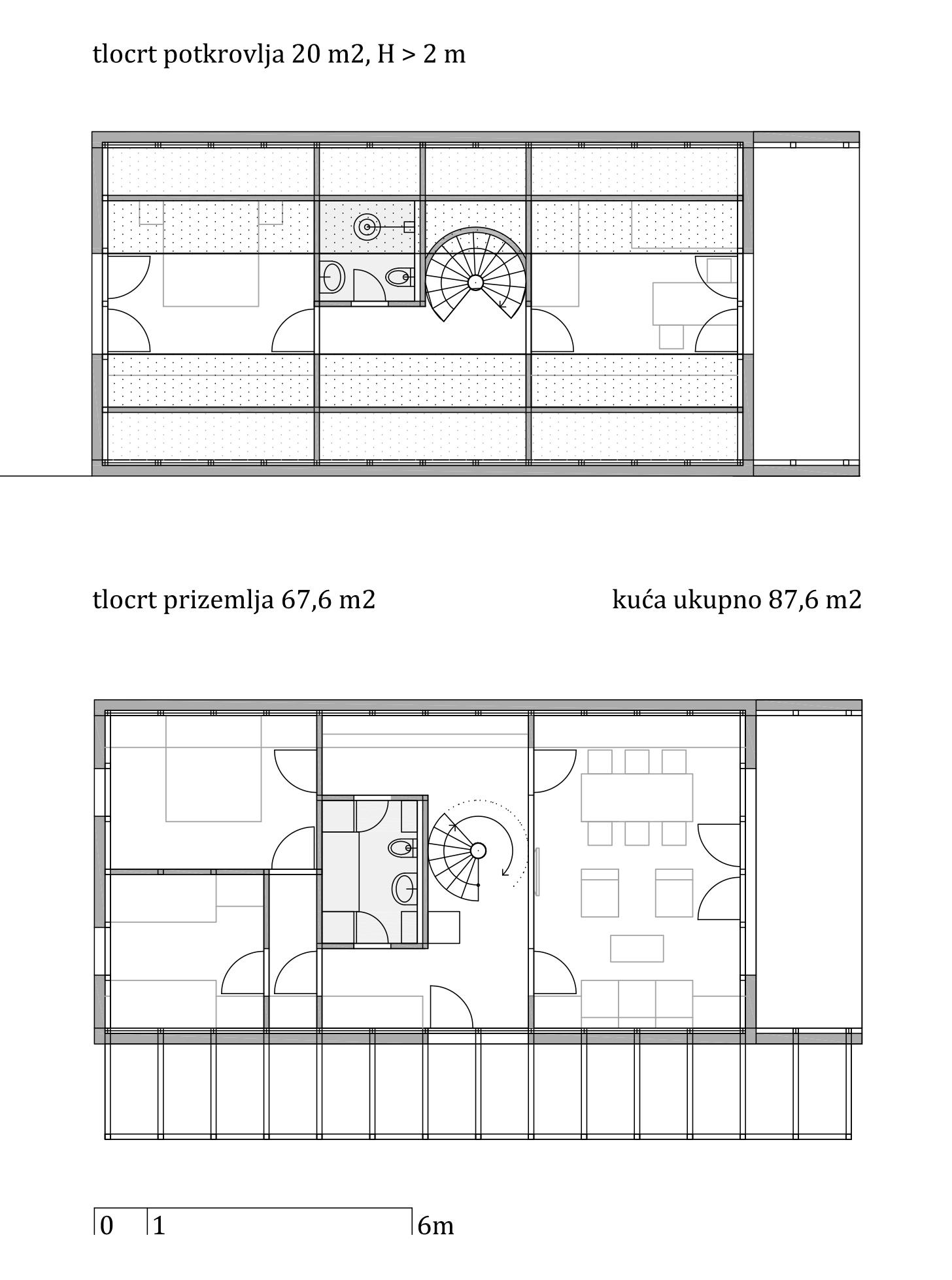
Mladen Josic, Minja Josic
Typical modular house with the possibility of expanding into the attic space (spatial view and floor plans)
Prof. Mladen Jošić is one of the leading designers of (multi) housing construction in the Republic of Croatia and the author of norms (dimensional standards) that should be used to design standard solutions for Banija. The project includes the possibility of expanding into the attic and optional additional elements (front and side porch)
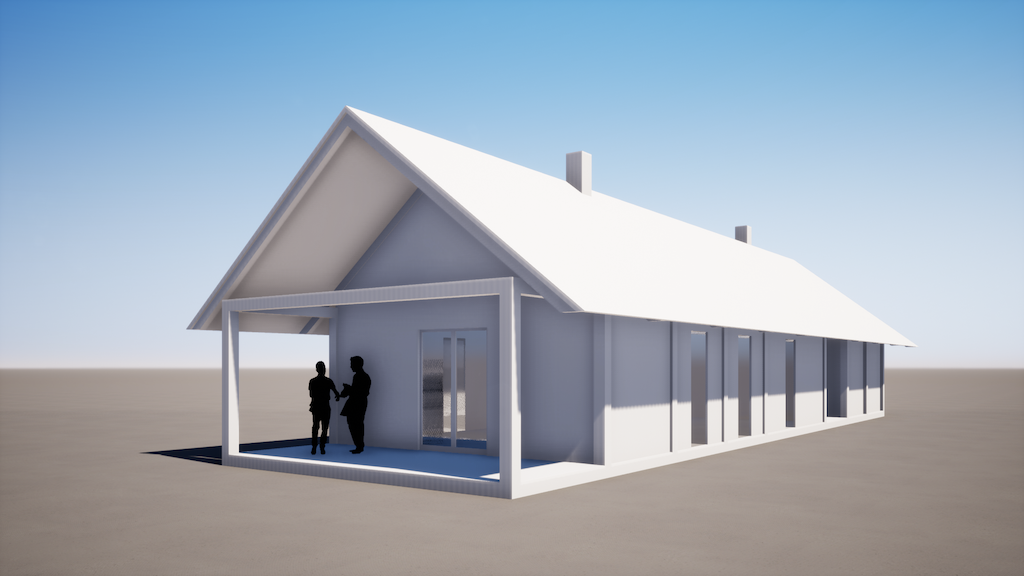

Vedran Duplančić
A typical modular house is based on a container module - spatial view and floor plan + facades.
Vedran Duplančić is a professor at the Department of Architectural Structures and Building Physics. His project - which is created in the module of one type of container - seeks to implement economic facilities under one roof, in addition to housing: tool storage, tractor parking, etc.
Since the fatal earthquake on December 29, 2020, which hit the area of Sisak-Moslavina County and a series of subsequent shakes that are still ongoing, the Zagreb Faculty of Architecture has been active in structured involvement to help the hardest-hit areas.
"Aware of the lack of time and speed with which to solve problems in the field, we decided to propose the production of different types of family houses with a special focus on light, semi-prefabricated and prefabricated houses made of lightweight materials. At the same time, in all types of houses, the proposed light construction can be replaced by classic and monolithic brick and concrete construction, without changing the floor plan and design," said dean Bojan Baletić.
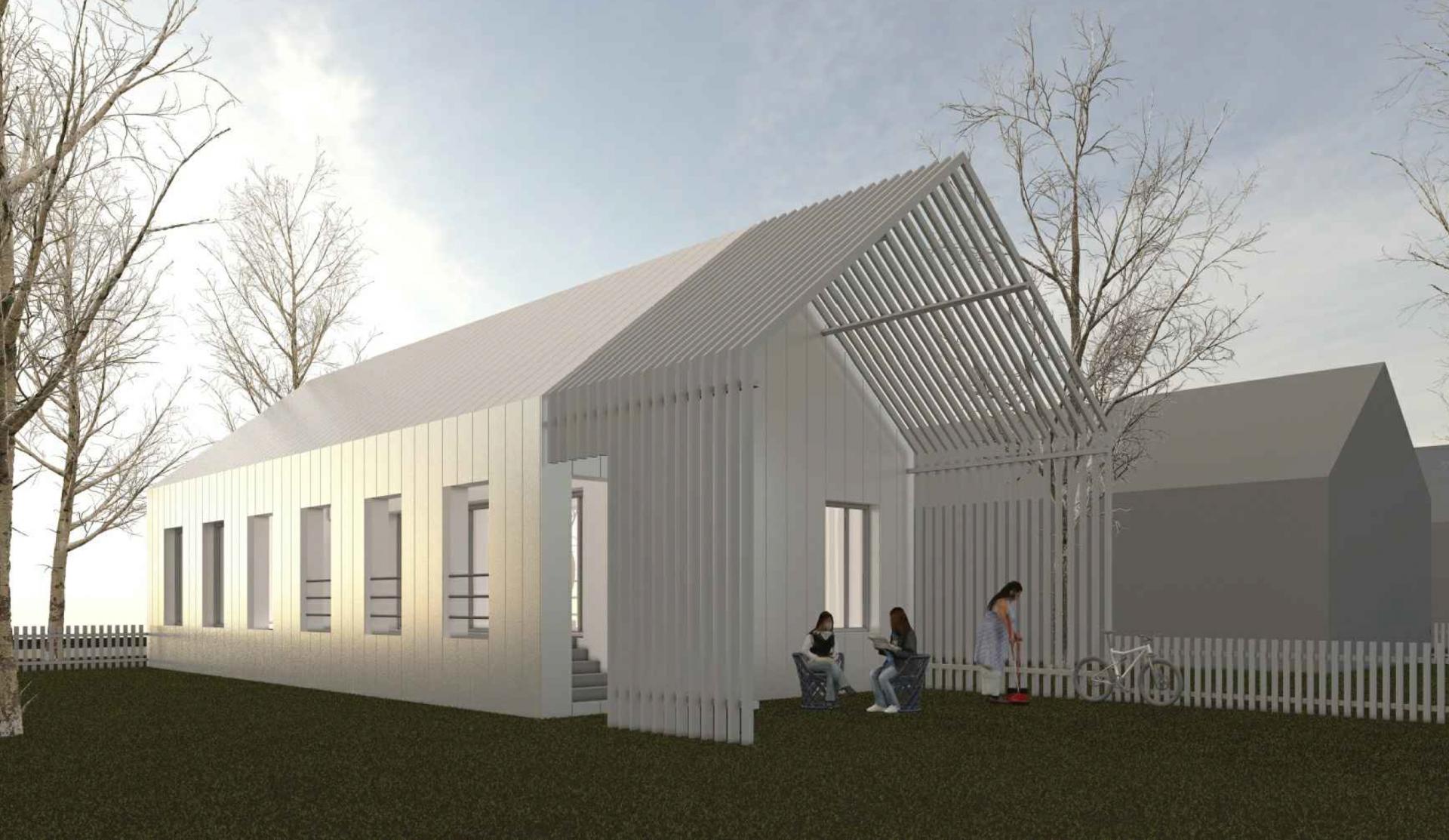
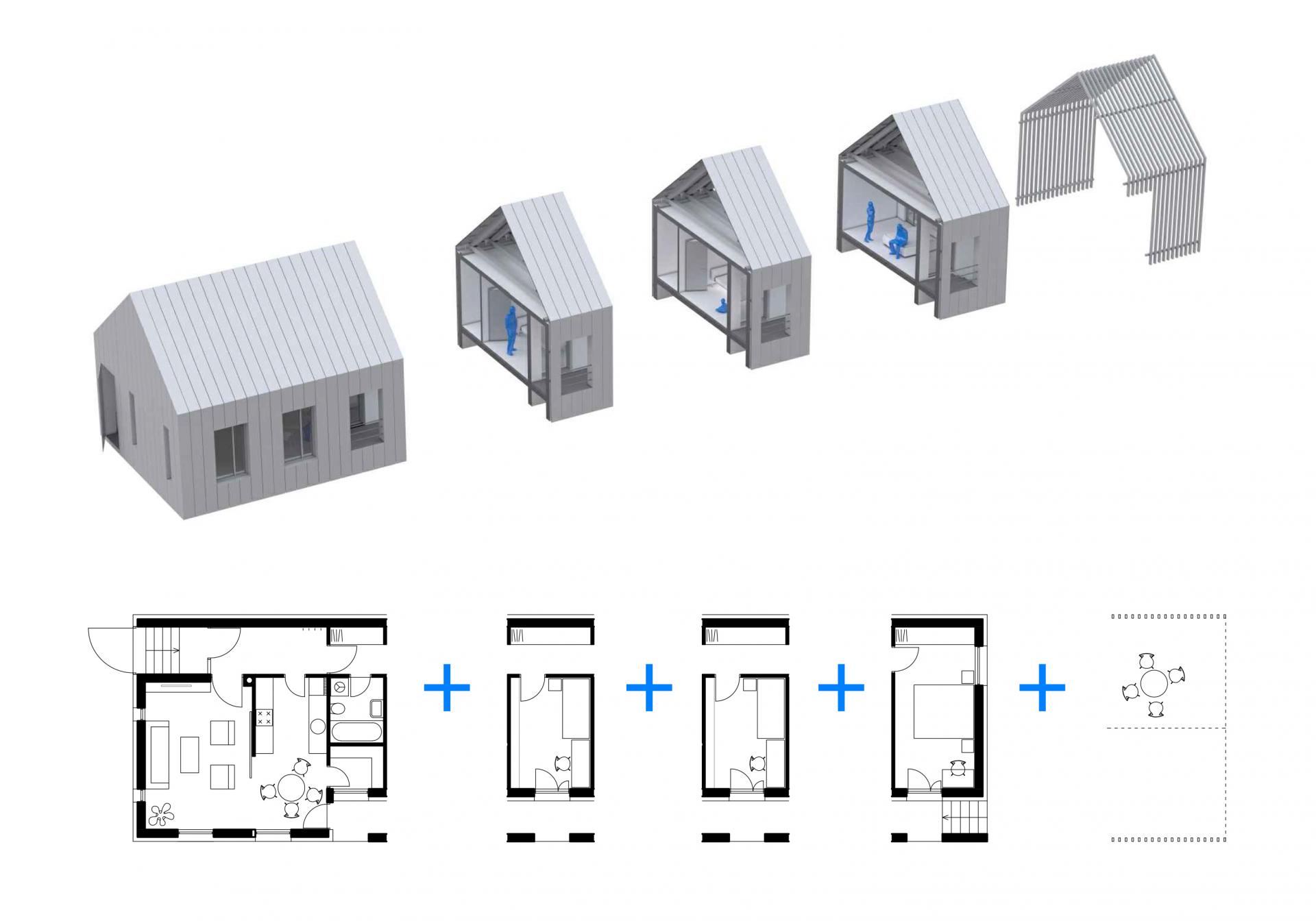
Luka Korlaet, Nino Virag
Typical modular house with a barn - simulation and scheme of modular growth
Luka Korlaet and Nino Virag are teachers of the Cabinet for Residential Buildings of the Department of Architectural Design, where they continuously study new types of housing organizations. This house connects with the environment, i.e., the plot's economic part.
The characteristics of the resulting examples, he adds, are evident in the modular design and construction, the variability of the dynamic floor plan, and the recognizability of the volume.
"All offered types of houses are designed for workshop-factory production in parts and assembly on construction sites. All projects use wooden, metal, or combined construction. They can be performed on light foundations - piles or foundation slabs. They meet the requirements of the nZEB in a rational and practically enforceable manner. They use renewable energy sources. They represent dry and fast construction," Baletić points out.
About twenty teachers were engaged in the development of project solutions. All the proposed houses consider the features of traditional architecture, but not in the banal sense of repetition of form, but in terms of creative interpretation of the local way of life. The teachers/designers were very well acquainted with the history of architecture of this area because they were described by experts Aleksandar Freudenreich, Davor Salopek, and Jasenka Kranjčević.
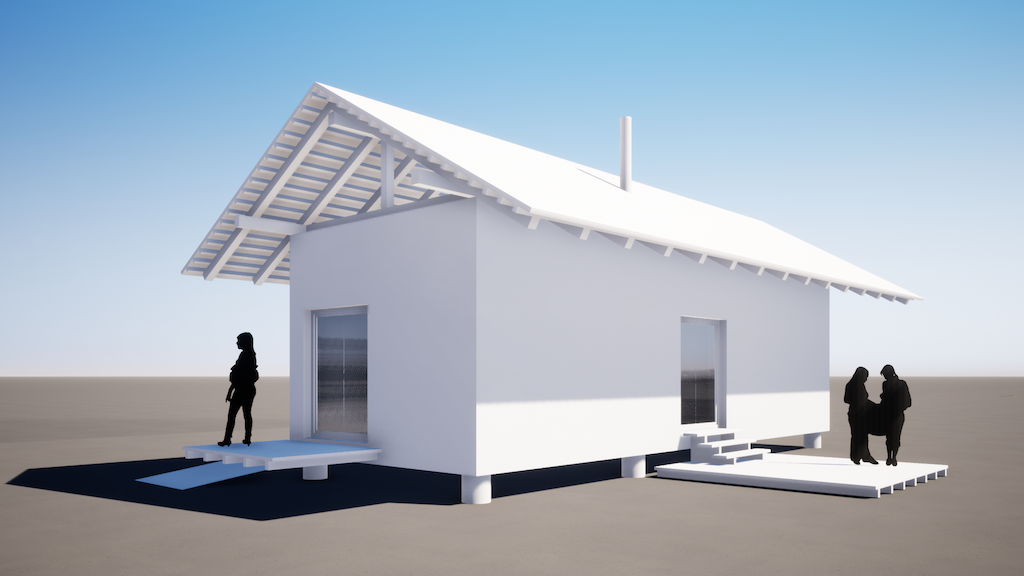
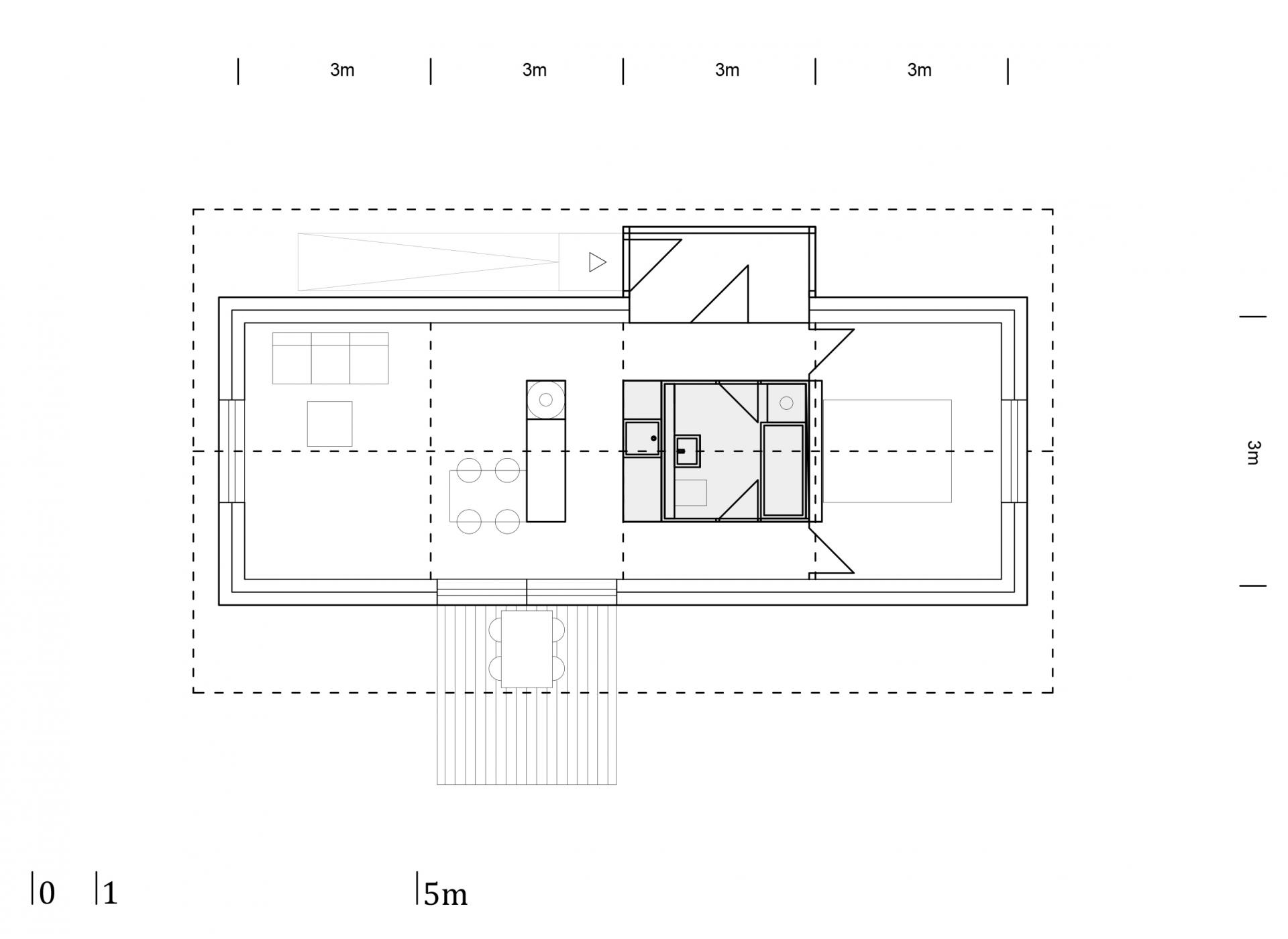
Lea Pelivan + Studio UP
Typical modular prefabricated house of 50 m2 - view and floor plan
Lea Pelivan is a professor in the Cabinet for Residential Buildings of the Department of Architectural Design and a partner in the project bureau Studio UP. In practice and teaching, she works in typological research, i.e., finding answers to the question of how architecture should / could respond to the spirit of the times.
The publication aims to position the profession (architects) in the place it deserves, i.e., to point out the necessity of quality and functional organization of space and adequate design. Furthermore, the intention is for architects to recognize themselves as unavoidable participants in the reconstruction. It is impossible to imagine or carry out the reconstruction of earthquake-devastated spaces. The criteria for selecting designers and contractors and the allocation of replacement facilities have yet to be determined by the competent Ministry. In this process, the Faculty of Architecture and the Croatian Chamber of Architects are partners and advisors in design and construction.
"The Faculty intends to conclude cooperation agreements with potential contractors. We have already established contact with several companies, and their representatives realize that they would be more competitive with better architectural solutions," says assistant professor Luka Korlaet, executive editor of the publication. Public procurement for the construction of typical replacement houses will be evaluated according to the price, deadlines, and, they hope, the proposed architectural solutions' quality.
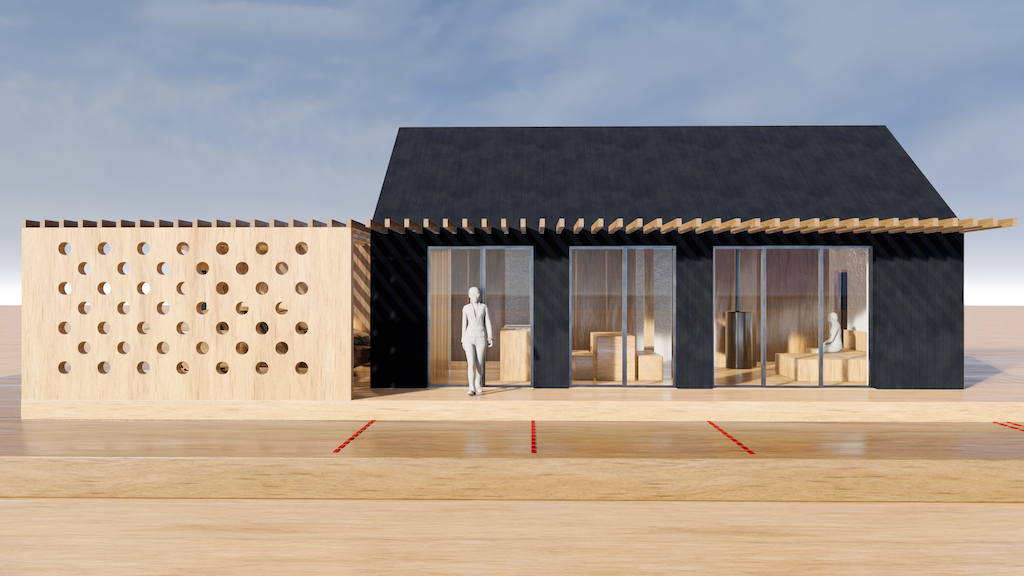
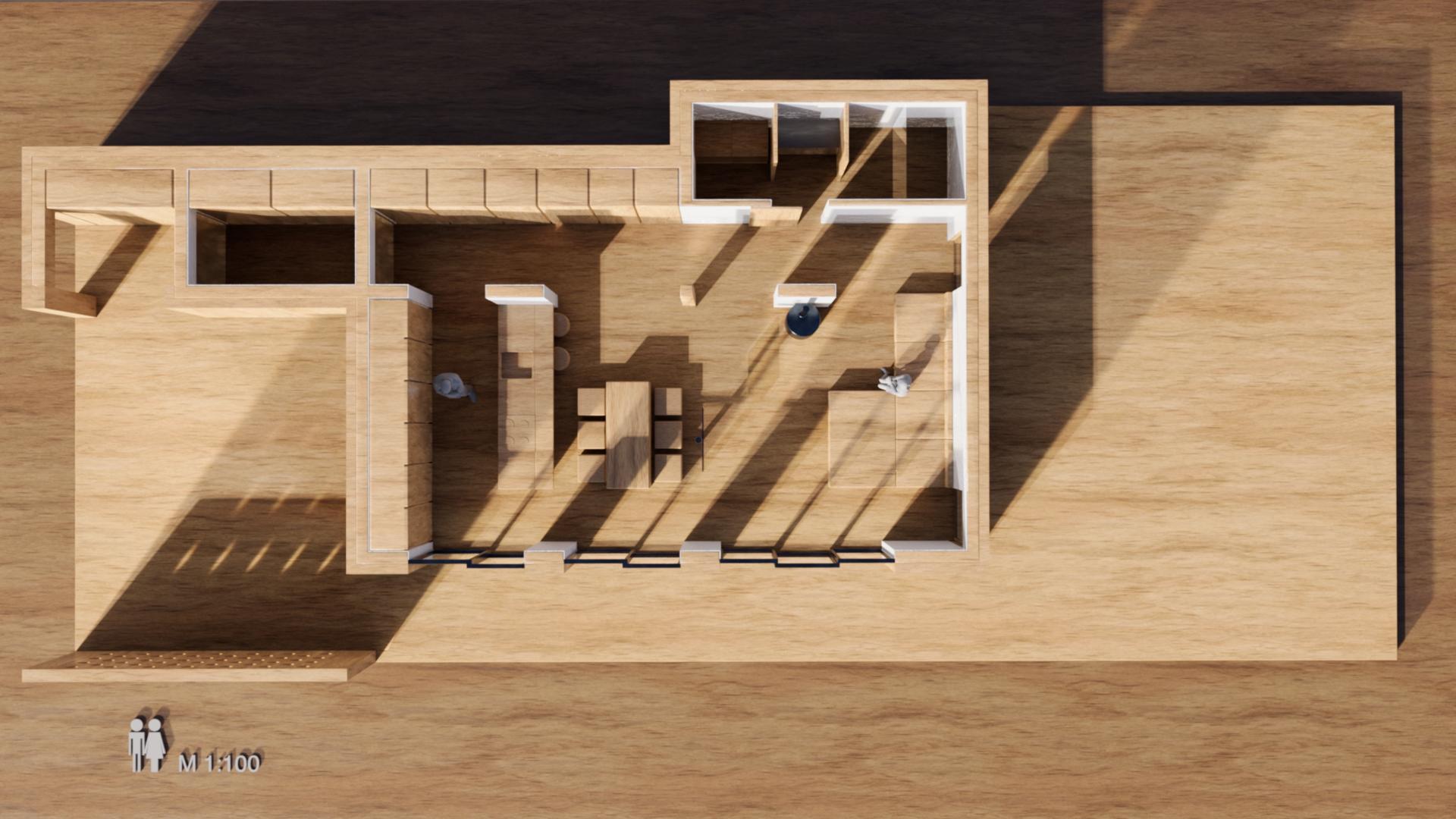
Alenka Delić
Typical modular house - exterior view and floor plan/layout
Alenka Delić is a professor at the Cabinet for Residential Buildings of the Department of Architectural Design, where she continuously works with typical, modular houses. The project in the picture is created in collaboration with a contractor and is a great example of synergy.
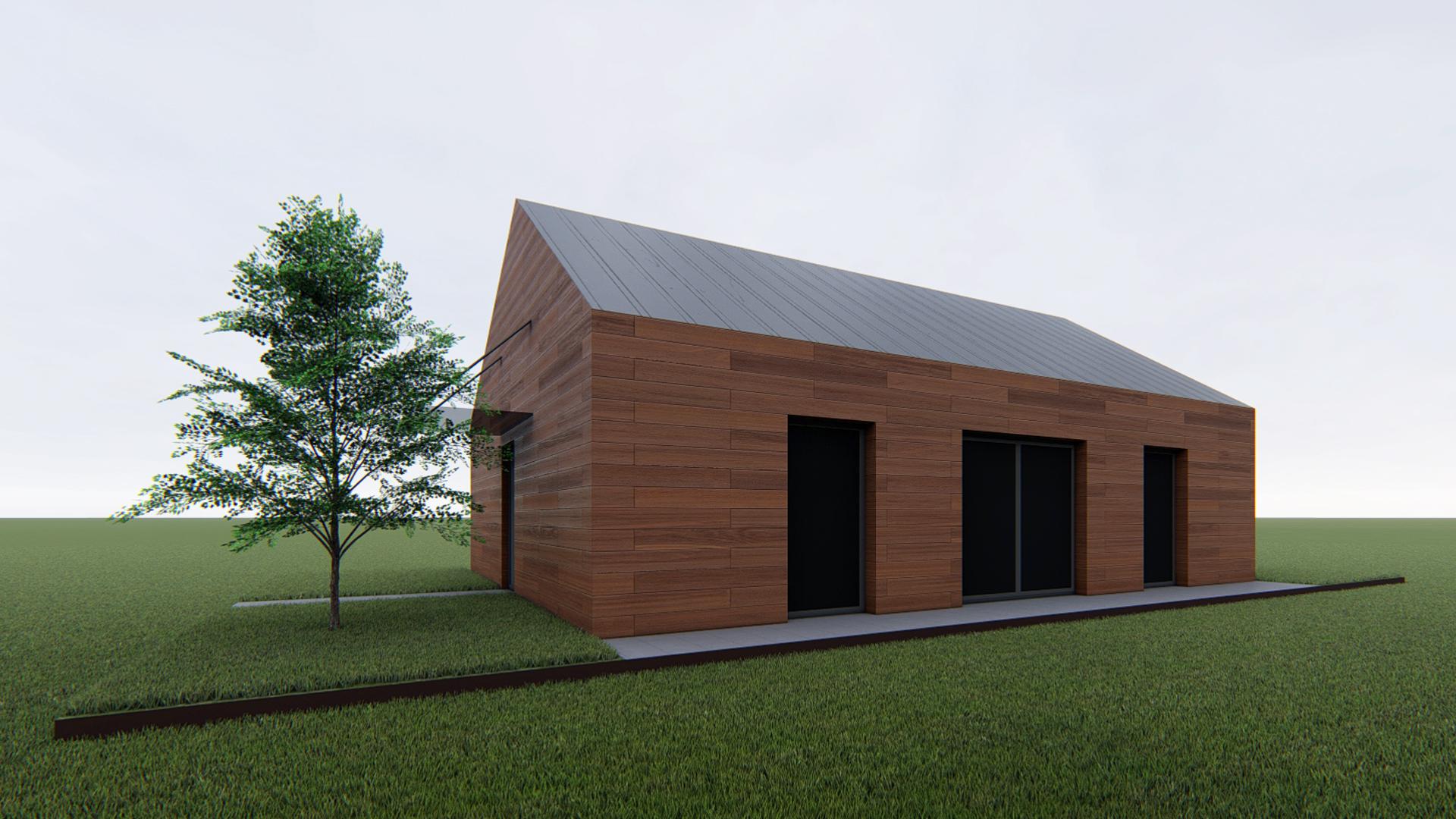
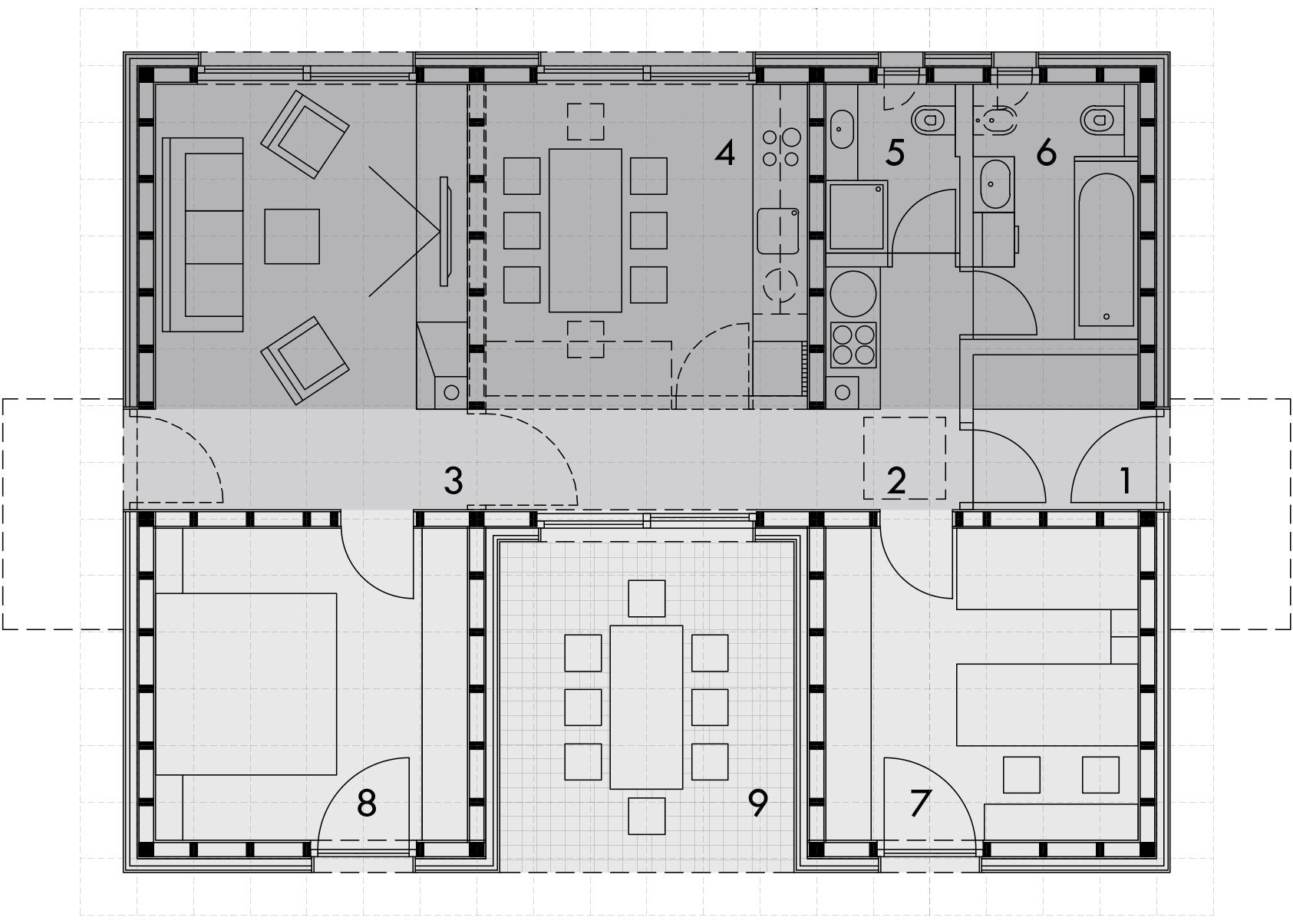
Ljubomir Miscevic, Mark Miscevic
Typical modular house in PGS system - simulation and floor plan
Prof. Ljubomir Miščević is the doyen of prefabricated modular construction in the Republic of Croatia, who patented several systems and products (PGS, EcoSandwich, among others). He has chaired the Passive House Croatia Consortium for years. He developed this system in collaboration with his son Mark, also an architect.
"Our faculty staff is an attempt to control the quality of the future built space as much as we can," Korlaet points out. We also discuss several proposed projects and variations. The range of solutions of about twenty of them guarantees that the reconstruction will not be uniform: there are 3500 severely damaged houses, and it would not be good to replace them all with two or three types/subtypes.
The companies that will compete have different technological starting points and will choose the types that suit them. The Faculty of Architecture solutions are similar but again different and creatively interpret local housing models. A special category of renovation consists of outbuildings, which should be in focus because all the residents of Banija emphasize the importance of accompanying economic activities, i.e., care for poultry and livestock.
"The entire public, and especially us as experts, were disturbed by images not only of demolished old brick houses, mostly from the 19th century, but also scenes of several relatively new buildings that collapsed. This indicates improvised or illegal construction, as well as the bad consequences of the legalization of inadequately built facilities," says Professor Karin Šerman.


Krunoslav Šmit, Nataša Ivanišević, Katarina Kozlović, Ivan Matorić
Simultaneously, there were numerous donations of building materials, which alerted the architects. With respect for the good intentions and necessity of such noble gestures, there could be further uncontrolled and unprofessional repairs and construction, and thus possible further dangers.
"Due to all these perceived threats, as well as the general scope of tasks, we decided to get involved as an institution in various areas and levels of our activities - from professional to educational."
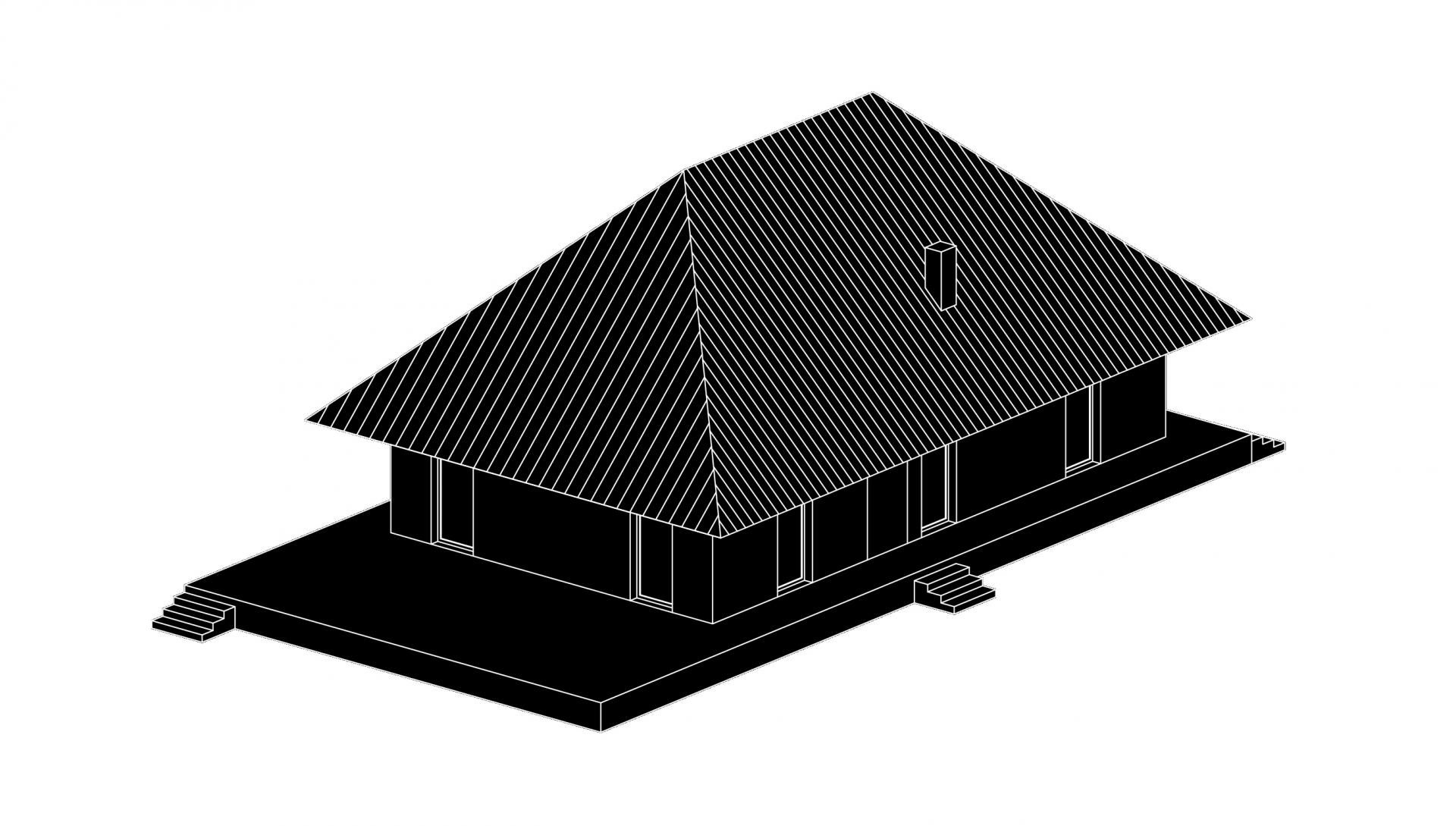

Ivana Ergic, Tamara Relic, Jana Horvat
Typical prefabricated house with a habitable roof - spatial view and floor plan
Ivana Ergić is a professor in the Cabinet for Residential Buildings of the Department of Architectural Design and young teachers, doctoral students Tamara Relić and Jana Horvat. Their solution - by interpreting the traditional pitched roof - leaves the possibility of expanding into it.

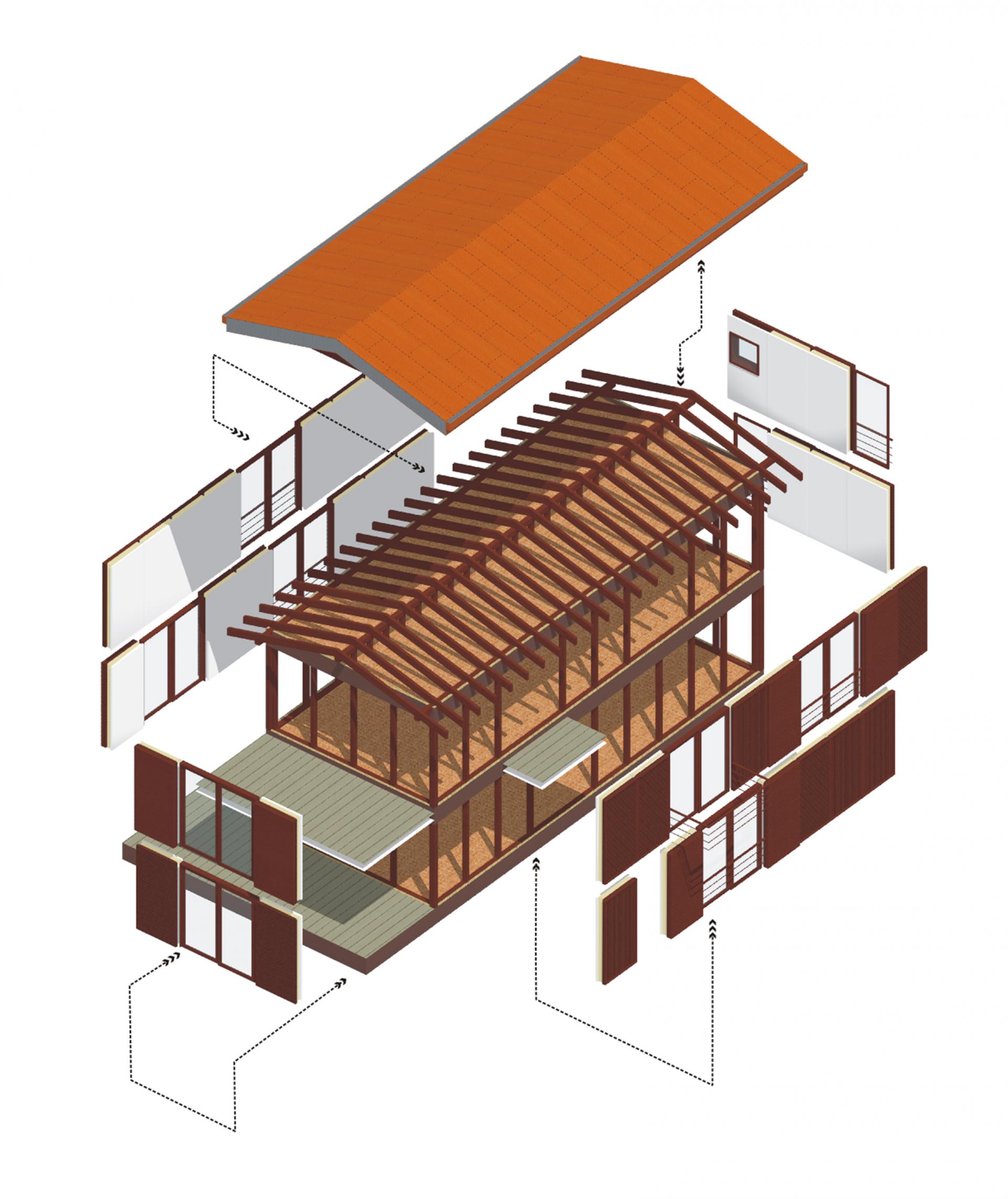
Ivica Plavec
Project of a typical modular house from the Klik-dom system - simulation and analytical presentation of building elements
Ivica Plavec is a professor at the Department of Architectural Structures and Building Physics. In his rich career, he especially dealt with modular construction in wood and developed a system called Klik-dom. In this system, he designed several houses that can be modularly increased in width and height.
"Through these projects of new, replacement buildings and houses and their backyards and farms, the tasks of organizing the space of damaged villages, restoration of collapsed urban tissues of historic cities, reconstruction of individual cultural monuments and valuable architectural heritage, and the necessary care to preserve the overall spatial and urban identity recognizable spatial and architectural spirit, we find responsibilities for our architectural and urban planning profession," concludes Šerman.
To read more about the Petrinja earthquake, follow TCN's dedicated page.
Kolinda Grabar-Kitarovic Volunteering in Quake-Hit Banovina
January the 19th, 2021 - Former Croatian President Kolinda Grabar-Kitarovic has been lending a helping hand in quake-stricken Banovina. The Petrinja earthquake which struck Sisak-Moslavina County back at the very end of December 2020 marked the end of a truly horrendous pandemic-dominated year, and with a lot to be cleaned up and rebuilt, the former president has been getting involved.
As Poslovni Dnevnik writes, former Croatian President Kolinda Grabar-Kitarovic visited the Radosevic family's estate in Novi Seliste near Petrinja last week. The devastating earthquake destroyed all material memories and anything of value for this deeply unfortunate family, and with professional and financial help, a new concrete house will now be built for them.
The owner of the house, 36-year-old Ivica, saw a light at the end of the tunnel with the help of the former president, Kolinda Grabar-Kitarovic.
''When an acquaintance called me and said 'Ivica, you know what? Kolinda is coming to you tomorrow,' I thought he was kidding around with me. I didn’t believe it at all straight away. And then when I saw her standing in the yard, I beamed. Not just me, but the whole family did. My heart was pounding for an hour! However, despite the fact that she's the former president, her move was not politically motivated,'' Ivica told Jutarnji list. He stated that Kolinda Grabar-Kitarovic inquired about the recent Petrinja earthquake, the family, the whole area, and asked them what they still needed.
"She promised to return in a week or two because she came in the company of experts who measured the terrain and did some sketches, and they'll build me a new house on the site where the old one once stood,'' says Radosevic, not hiding his satisfaction with the promises he has been given.
The Radosevic family house was otherwise set on fire back during the war, and after years of decay it was rebuilt by the state.
"The work was sloppy and we were happy to have a roof over our heads, but I didn't expect the house to disappear like this in just a second," said the father of six. On the day of the Petrinja earthquake, he was at work at the Petrinja cemetery as an employee of Komunalac. A resident of Novi Seliste says that the former president stayed with Ivica for quite a long time.
''As she walked through the muddy yard and talked to the neighbour’s children and played with their dog, which obviously reminds her of her own adopted dog, Kika, none of us even thought it would be her. She had a mask on and was dressed just like any other normal worker out in the field,'' said another local.
Kolinda Grabar-Kitarovic came to Banovina to volunteer with other people, she wore a mask and a green cap with the Croatian coat of arms on it and spent her days volunteering in the kitchen before Pleter took over the food supply. Some locals also learned that she gave them words of comfort and took large boxes of groceries out of the vans and took them to the locations where they were most needed.
''Kolinda was just a masked volunteer. She was like all of us, nameless, without any self-promotion. She carried liquids with food and hauled goods. She didn't stop even once,'' said one volunteer.
For more on the Petrinja earthquake, follow our dedicated section.
Par'l Committee: Concrete Support to Farmers in Earthquake-Hit Areas Needed Now
ZAGREB, 15 January, 2021 - Farmers in earthquake-hit areas need concrete help immediately so that they can stay and live and work there, it was said at a meeting of the parliamentary Agriculture Committee on Friday.
In three months' time the committee will convene to analyse what has been done to assist people affected by the earthquakes in 2020.
Farmers are faced with many problems - damaged houses, farm buildings and equipment, polluted wells and buyers who are taking advantage of the situation and offering low prices for their cattle, the committee heard.
The one thing that is obvious is that no one wants to leave their homes, the committee chair, MP Marijana Petir, said.
She said that farmers should be provided with temporary accommodation as soon as possible but also with shelter for farm animals. "We need to act quickly and concretely because if farms shut down, they will never reopen," underscored Petir.
She added that applications for farm support need to be make simpler for earthquake-hit areas as farmers there cannot meet the current criteria.
Everyone needs help immediately
Božidar Antolec from a local action group called for help so that local farmers can place their products on the market and that they be temporarily exempted from paying contributions or at least that they be deferred.
Croatian Chamber of Agriculture (HPK) president Mladen Jakopović said that two large retail chains had offered to place farmers' products from earthquake areas on their shelves through a simplified procedure and one had promised logistics in that regard.
The HPK advocates that support should be provided so that people remain in the area. Jakopović said that the HPK was delivering the first of several housing containers to the area today.
The committee's deputy chair, MP Ružica Vukovac (DP), said that there were problems on the ground, presenting an example in Donja Bačuga where it took three days for the competent services to save a herd of cattle, which, she said, showed that there was a problem in the chain of command.
Agriculture Minister Marija Vučković and state secretary Tugomir Majdak rejected this criticism, saying that they had been in the field constantly.
"That is not a realistic description. The cattle wasn't abandoned and there is no need to exaggerate the situation," Minister Vučković said.
She supported the suggestion that the majority of local products should be used in local kindergartens, schools, hospitals. "We are working on that, however, it is necessary to increase production in that area," she underscored.
Projects valued at more than HRK 1 billion agreed to
Speaking about rural development measures, Vučković said that by 13 January projects valued at HRK 1.08 billion had been agreed to for Sisak-Moslavina County and that HRK 851 million had been paid out. HRK 137 million refers to social and utility infrastructure and HRK 67 million of that has been paid out.
Rural development measures for family-run farms valued at HRK 164 million have been agreed to for 81 projects and 29 projects valued at HRK 1.7 million have been agreed to for emergency aid due to the consequences of the COVID-19 pandemic.
A total of 451 projects for the development of small farms, launching of non-farming activities and support to young farmers valued at HRK 80.3 million have also been agreed to, said Vučković and added that direct payments were accelerated and that to date HRK 93 million, which is usually paid as of 15 February, had already been paid out.
Products from Banovina Now Available on Zagreb City Online Market
January 13, 2021 – In order to help family farmers from the earthquake-hit area, Zagreb City Online Market has recently included products from Banovina in its offer.
Family farms in Banovina, the area struck by the recent earthquake, are currently facing many challenges. With many damages to houses, the inhabitants of that part of Croatia who are engaged in food and beverage production must still ensure their livelihood. Help is more than needed, and in addition to already collected food donations and hygiene supplies, they will still need help to recover successfully.
To make family farms from Banovina even more visible, a large project, "Let's buy from Banija," was recently launched, encouraging people from Croatia to buy their products. Likewise, the City of Zagreb recently decided to help Banovina producers by including their products on its Online Market pages.
Namely, the City of Zagreb launched the Online Market application at the beginning of April 2020 to help domestic food and beverage producers to market their products. It is a platform that connects producers and buyers to promote local family farms that are struggling due to the coronavirus epidemic.
After the devastating earthquake that hit Petrinja, Sisak, Glina, and the surrounding towns, the City of Zagreb decided to include family farms from that area in the Zagreb City Online Market offer. All producers from Banovina received the heart label, and they can be found on the Zagreb City Online Market website.
Since April, the Zagreb City Online Market has been operating continuously, and the fact that customers have accepted the project is shown by the website's 60,000 visits per month.
"We invite all citizens to support our small producers from Banovina, as they constantly support Zagreb producers within the application Zagreb City Online Market," said the Zagreb City Administration.
To read more news from Croatia, follow TCN's dedicated page.
PHOTOS: Changing Face of Historic Petrinja - How It Used To Look
January 12, 2021 – The pictures of Sisak-Moslavina after the earthquake of late 2020 tell a terrible tale. Sitting close to the epicentre, the town of Petrinja was badly damaged. Once the main town of the area, this is not the first tragedy it has undergone. Nor is it the only tragedy it will overcome. The devastating pictures we currently see are not the real Petrinja. These images are temporary. Historic Petrinja has survived the attack of invading armies, of changing politics and regimes. It has rebuilt, kept its heart and retained its community. The following pictures remind us of historic Petrinja through the ages – how it once was, and how it will be again
"From 1991 to 1995 we were occupied," one resident of historic Petrinja tells TCN of his remembrances of the Homeland war. "Here and near Karlovac was the closest they got to Zagreb. If you think about it, that's really close. The town was devastated. My street was burned almost completely to the ground. My house included. I think maybe 5 houses in the whole street survived. That's from a total of around 50."
Were these houses destroyed by guns attacking the occupiers or by those occupying the town? (your interviewer asks, perhaps naively)
"Ha! (a dry laugh) They were destroyed by those occupying the town".
Why would anyone do that to a town that they wanted to be part of their country?
"For over 20 years I ask myself the same question, Marc. I still do not have an answer to this day. They burned half of the city immediately after the occupation began. We saw our town burning to the ground. I was just a child at this time, my family fled to Sisak."
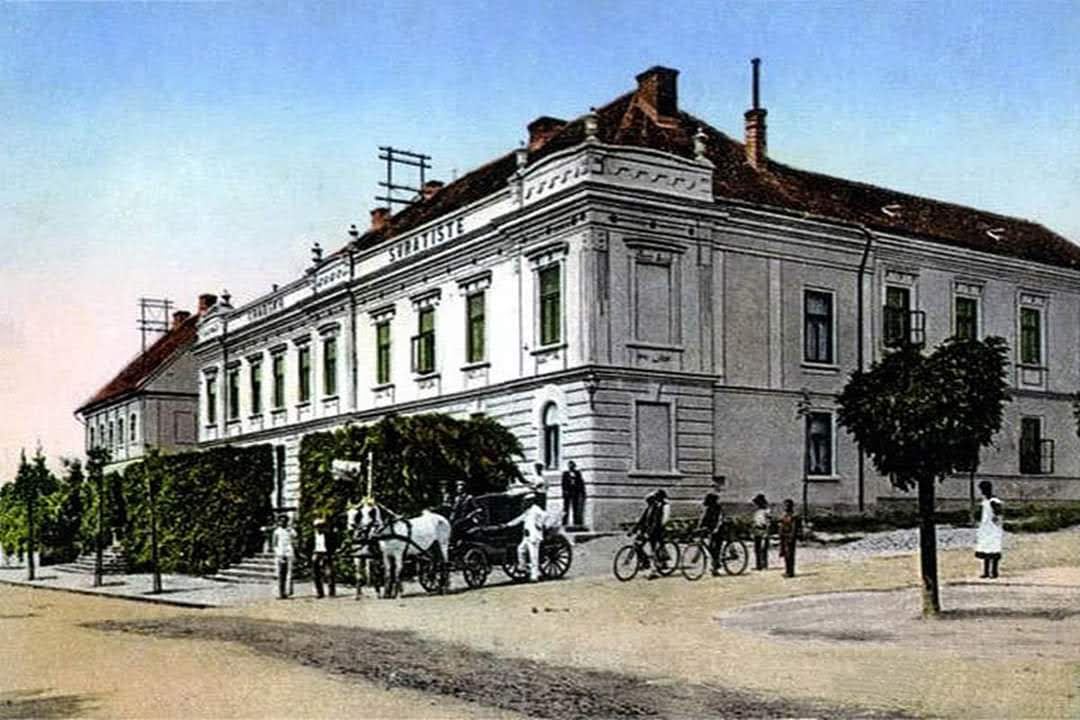 Croatian Home (Hrvatski Dom). At the time of this image, the building was located on Banska street. Today, it is known as Matije Gupca street
Croatian Home (Hrvatski Dom). At the time of this image, the building was located on Banska street. Today, it is known as Matije Gupca street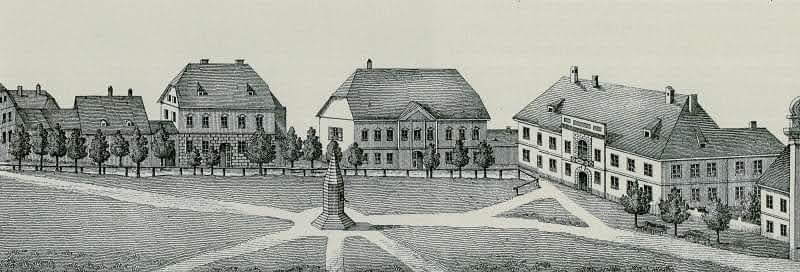
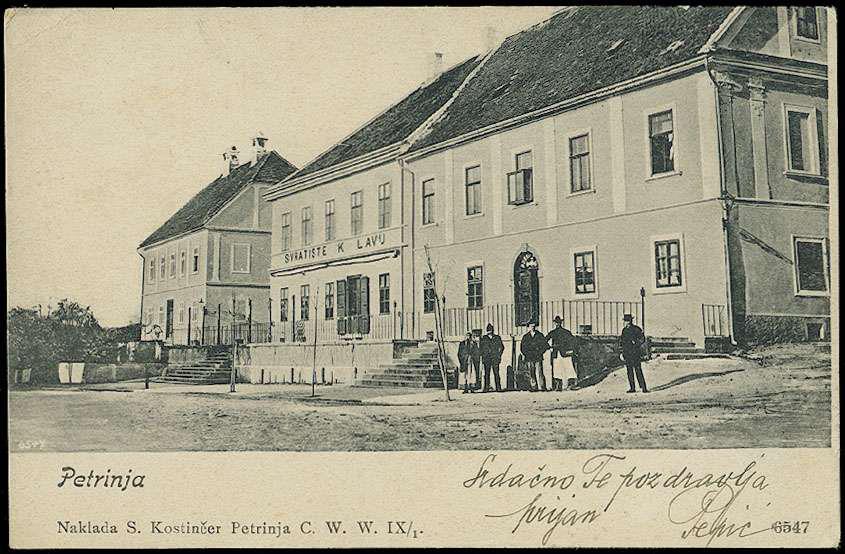

Croatian Home (Hrvatski Dom) on Banska street (today's Matije Gupca Street)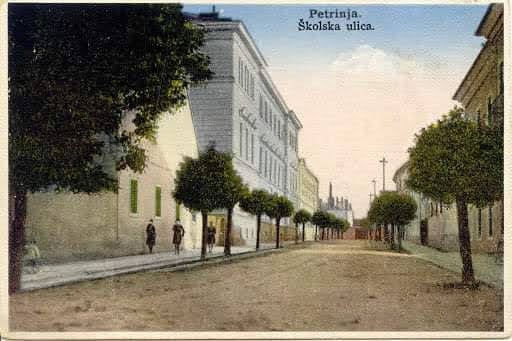
Formerly Školska street, this street is today known as Gundulićeva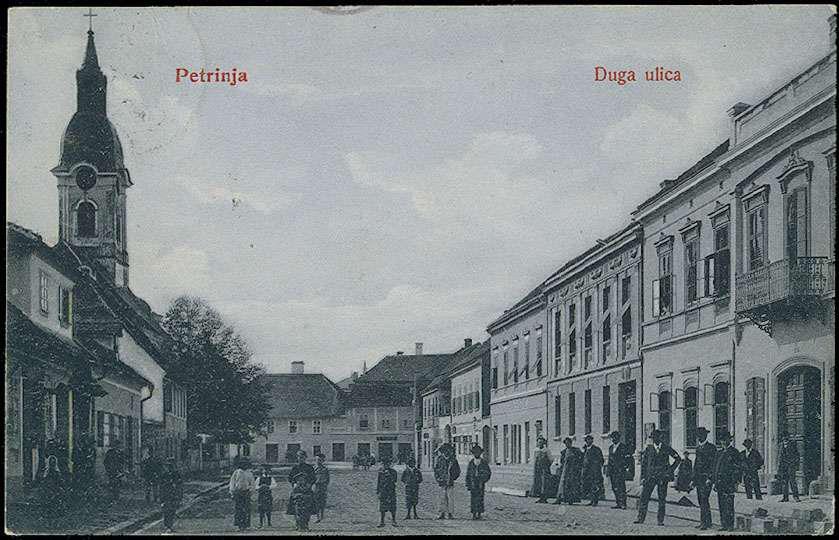
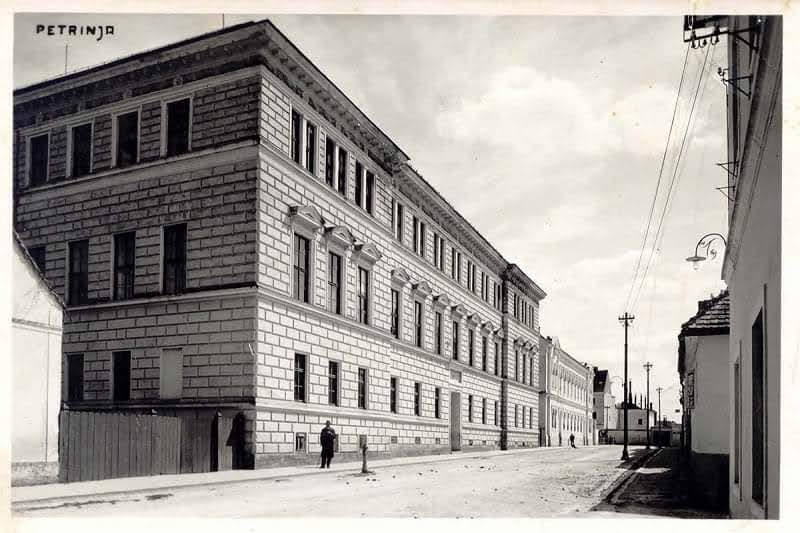
Today's secondary school building, formerly a teacher training school and a grammar school on Školska street (today's Gundulićeva)
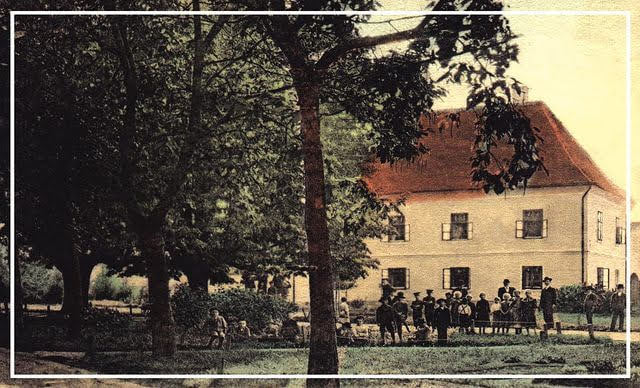
View of the former town courthouse from Petrinja town park
The town of Petrinja occurs where the river Petrinjčica meets the river Kupa , about 13 km southwest of Sisak and about 48 km southeast of Zagreb. Historic Petrinja is the capital of an area today known as Banija or Banovina (both are correct). The prefix 'Ban' refers to the title of a royal appointed 'duke', or similar, who used to run the area (or not) when it was part of the Austrian empire.
Many people have travelled very far to help the relief efforts since the earthquake of late December 2020. Because some people have no homes, no electricity, no food, no jobs, no heat. And it is the middle of winter. Others stay at home and argue online about whether the area should be referred to as Banija or Banjovina. How - and if - you judge such a debate is entirely your choice.
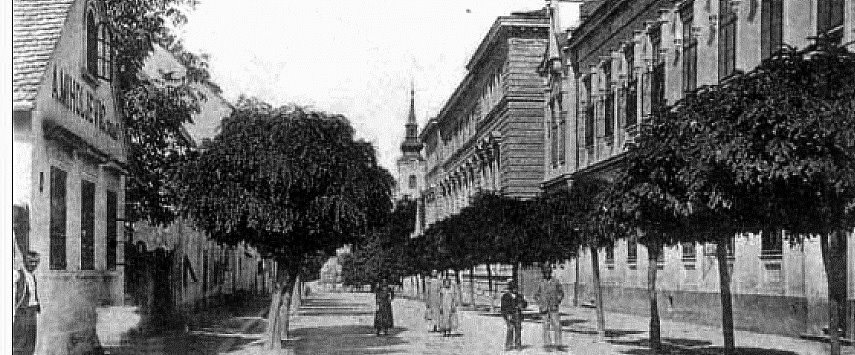
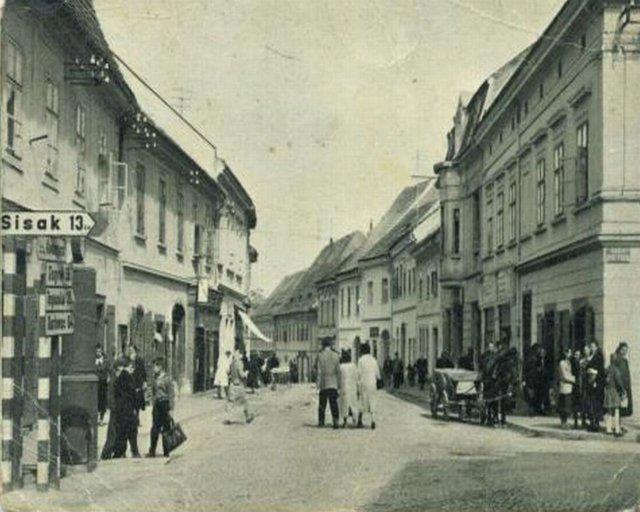
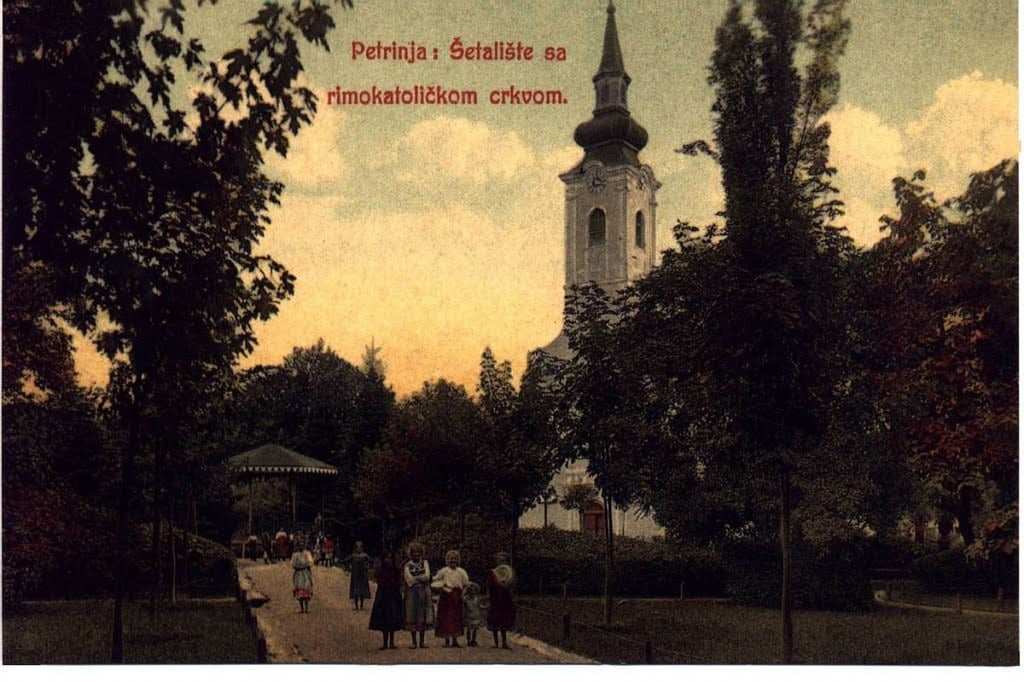
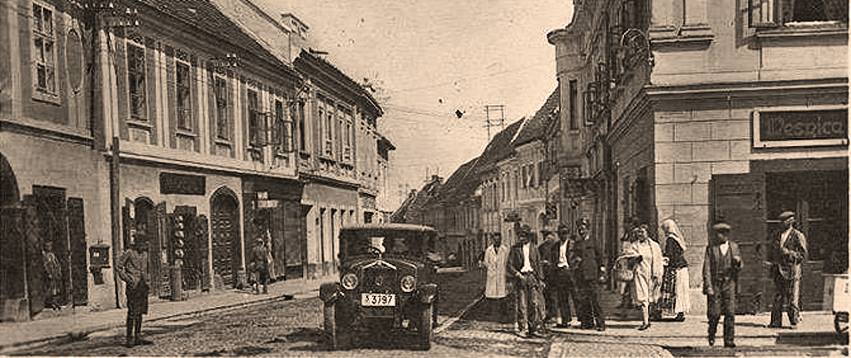
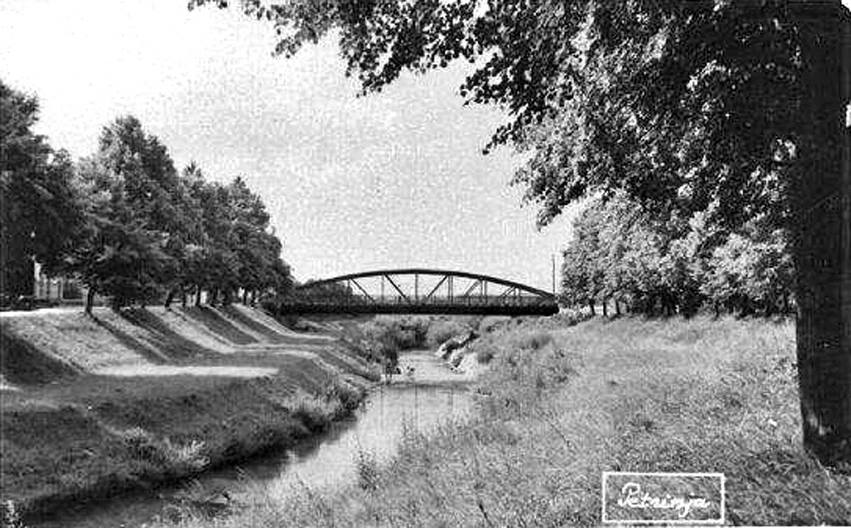
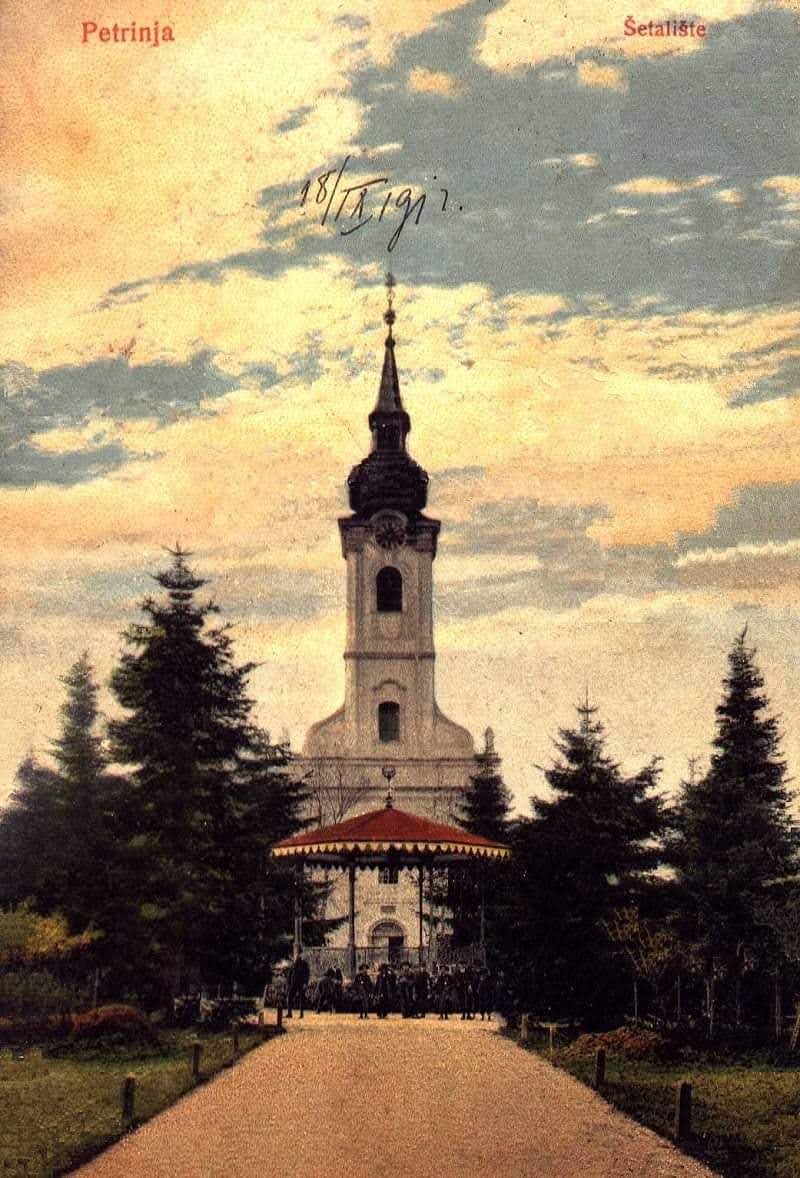 Church of St. Lawrence in the town park
Church of St. Lawrence in the town park
After fleeing from the invading ottomans, the Gavrilović family located in the area of historic Petrinja during the mid 17th century. In the year 1773, the Empress Marija Teresa decided Petrinja would be a centre of craft guilds, including the butcher's guild, of which the Gavrilović family were a part.
In the early 1800s, the Gavrilović family became the main suppliers of meat for Napoleon’s troops located here, on the former military frontier. By 1883, long after the departure of the French, the Gavrilović meat factory employed 50 people and slaughtered 50 pigs a day. It became Croatia's first salami, sausages and cured meats factory.
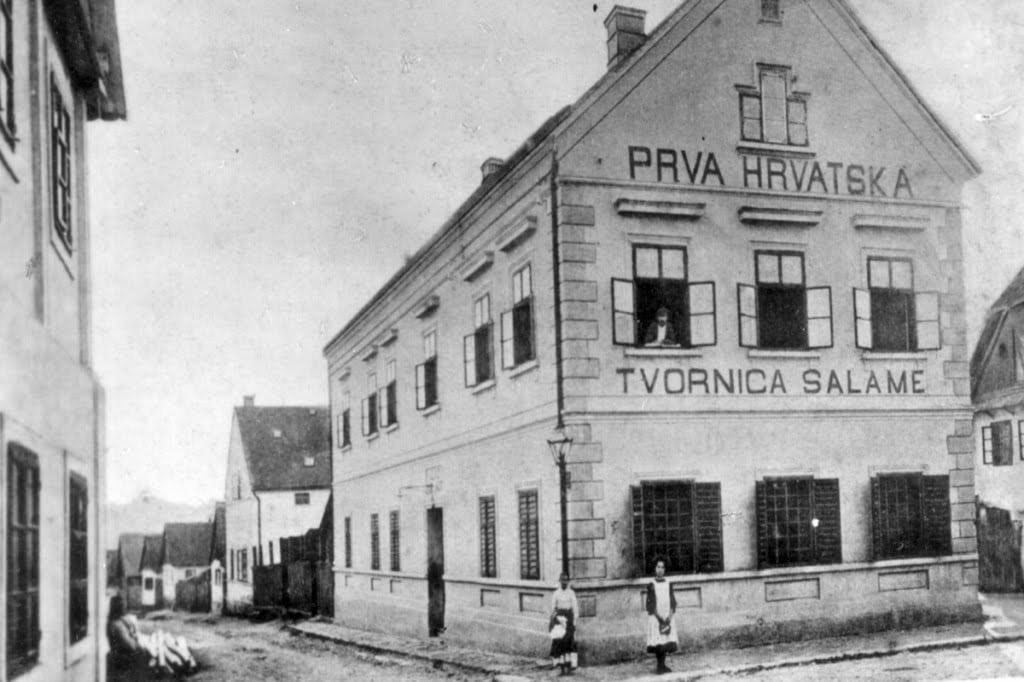 Croatia's first salami factory on Srnakova / Gundulićeva street
Croatia's first salami factory on Srnakova / Gundulićeva street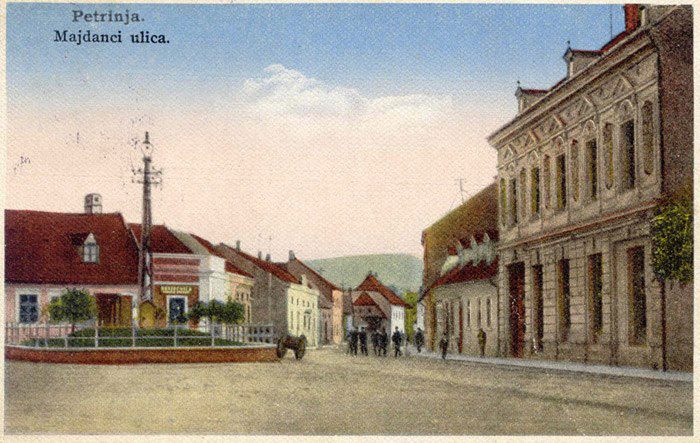
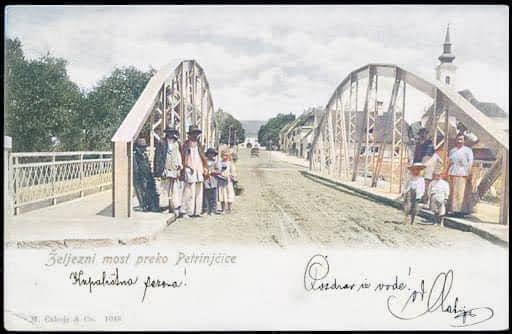
Iron bridge over the river Petrinjčica, Matije Gupca Street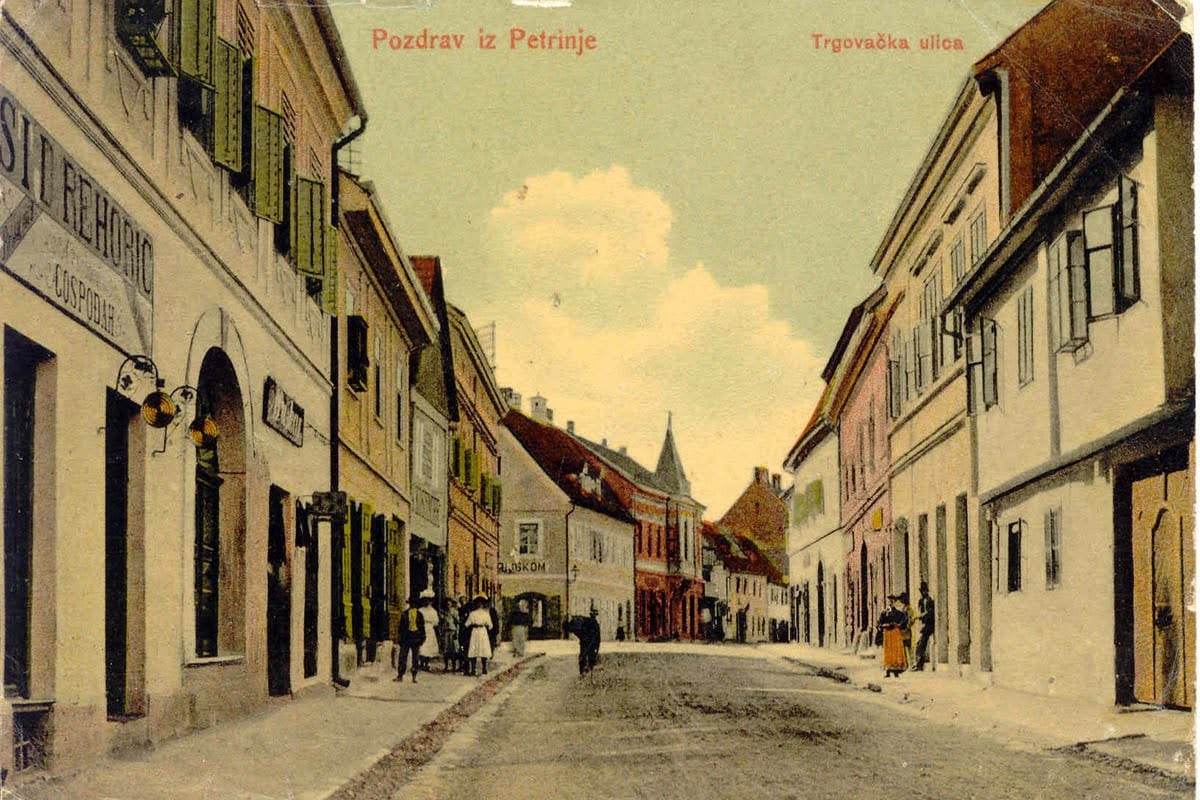 Trgovačka street, today known as Nazorova street
Trgovačka street, today known as Nazorova street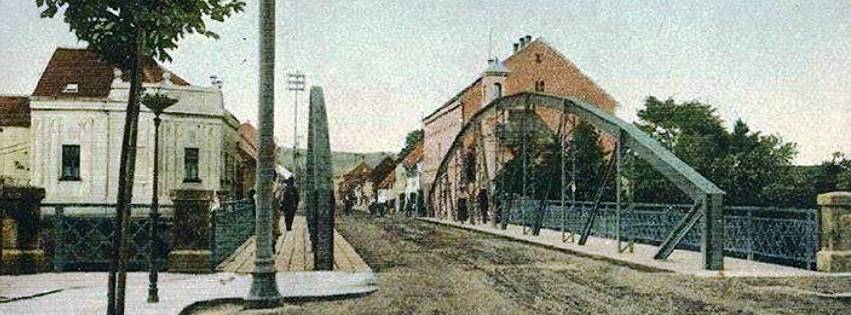
The town dates back to at least the 13th century, as does its first fortifications, built to stand against the invading Tartars. The city was granted free royal status during this time for its defence against these invaders
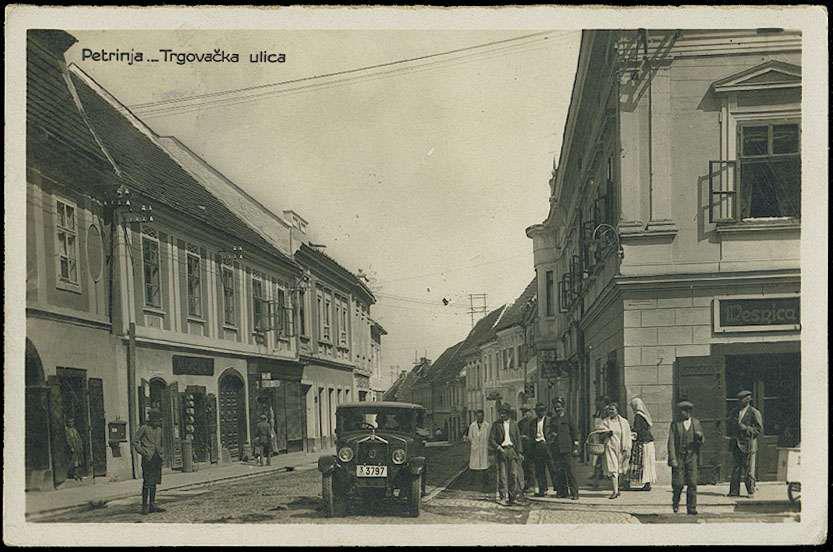
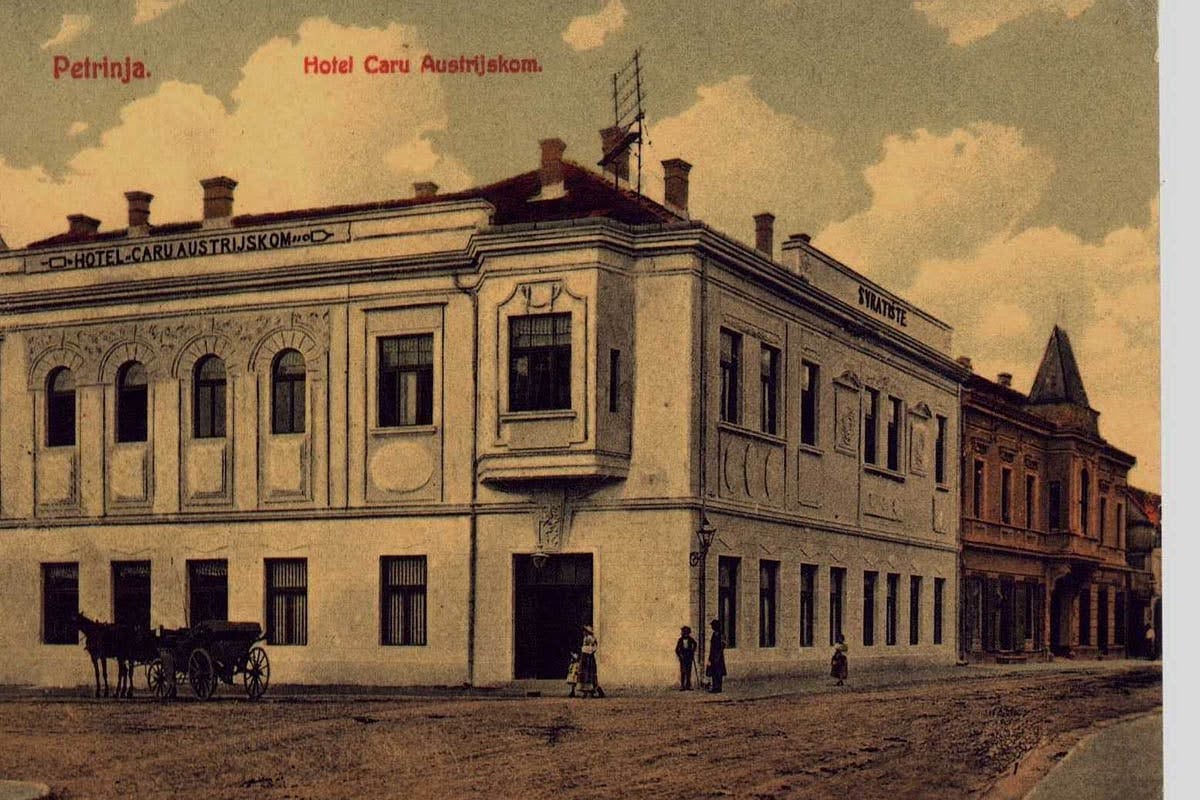 The town hotel, on Turkulinova / Nazorova street
The town hotel, on Turkulinova / Nazorova street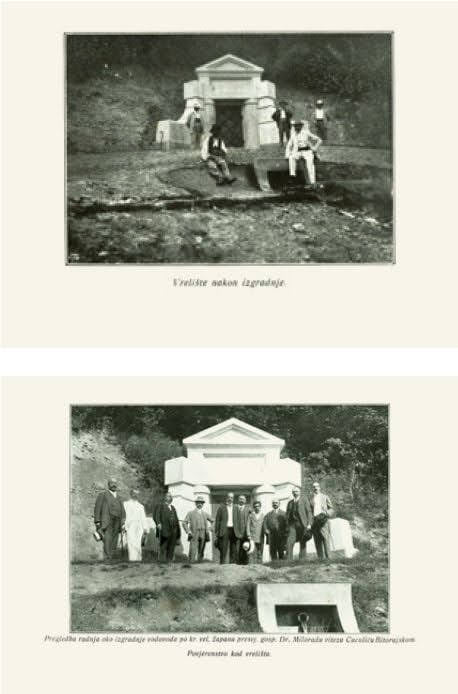
Petrinja springhead/water source on Jelen hill
The grand opening of the city waterworks, on the hills overlooking Petrinja
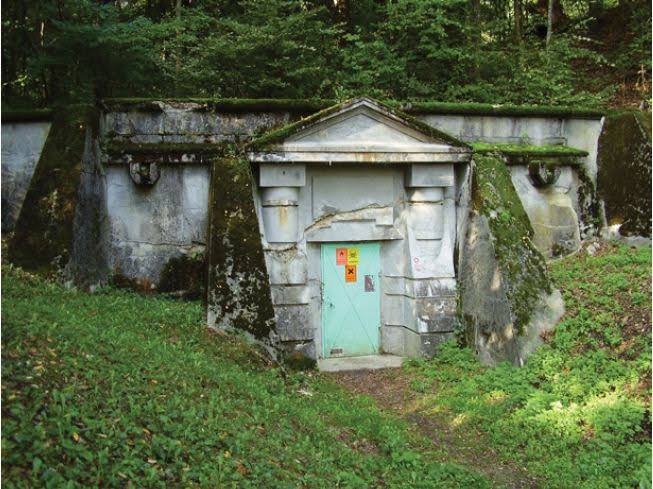 Contemporary view
Contemporary view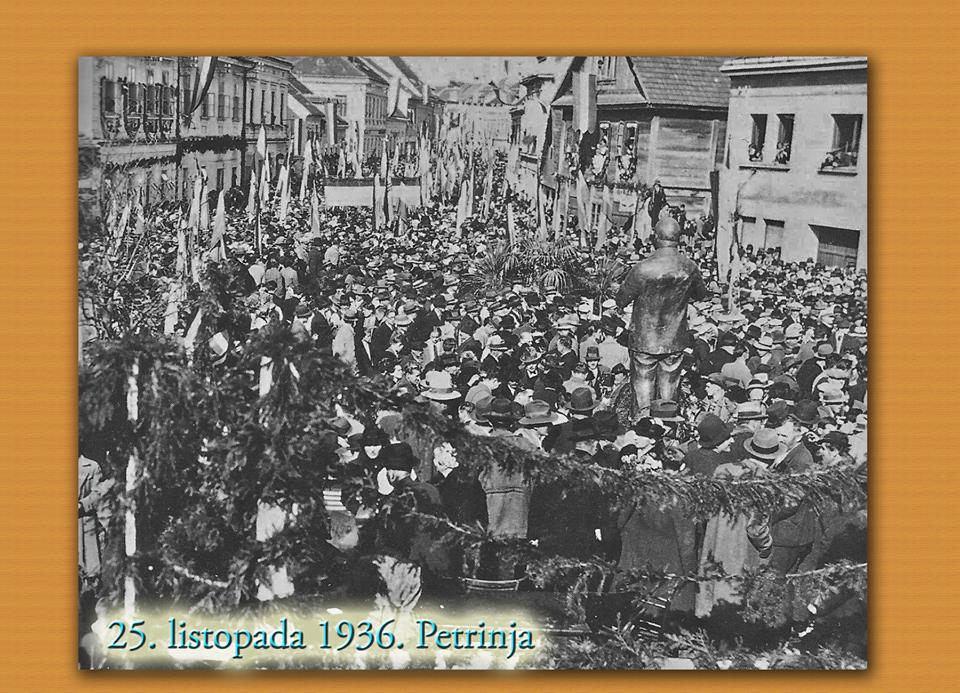
Historic Petrinja: The Yugoslav era
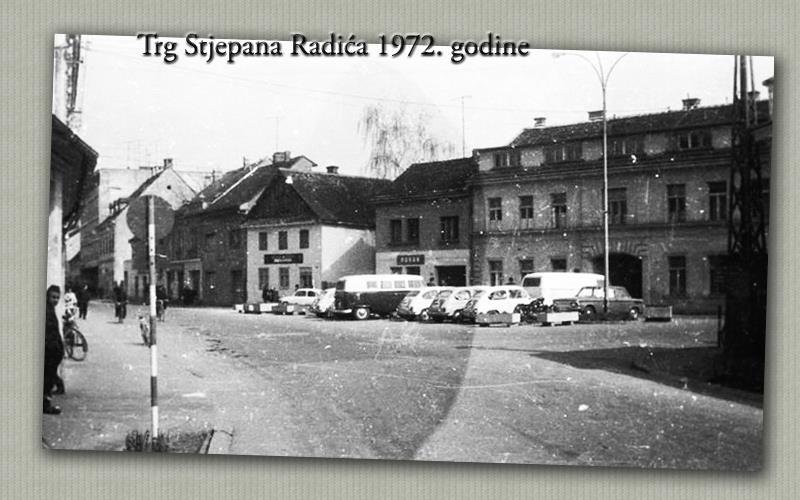
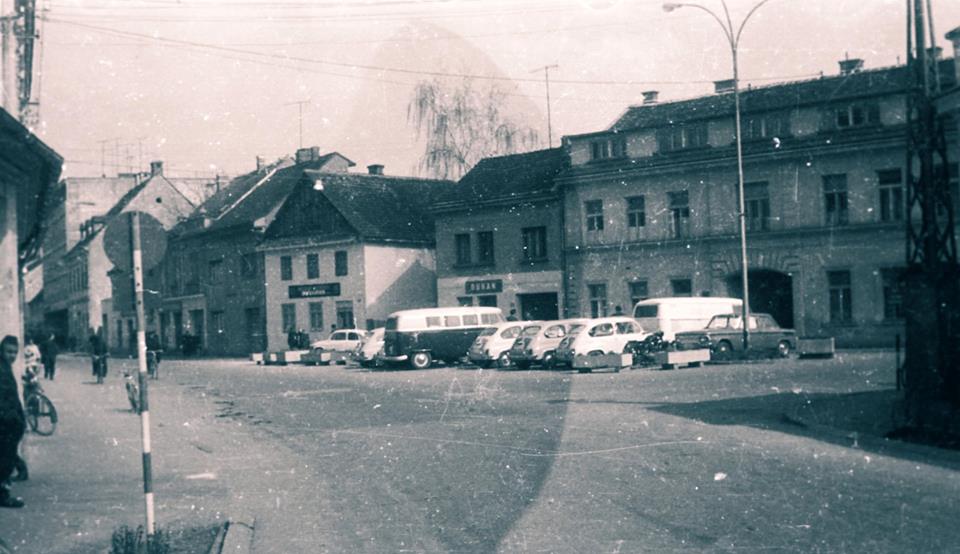
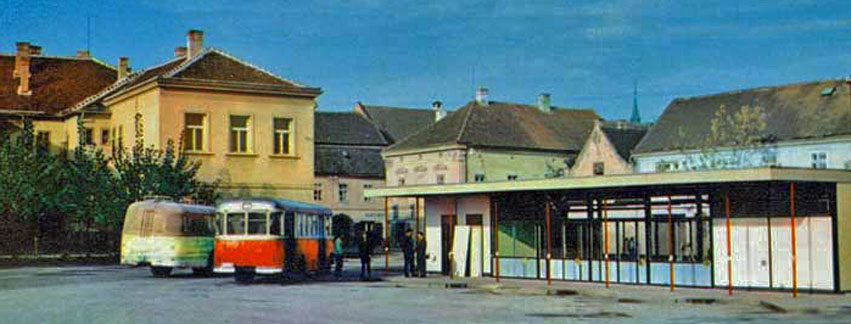
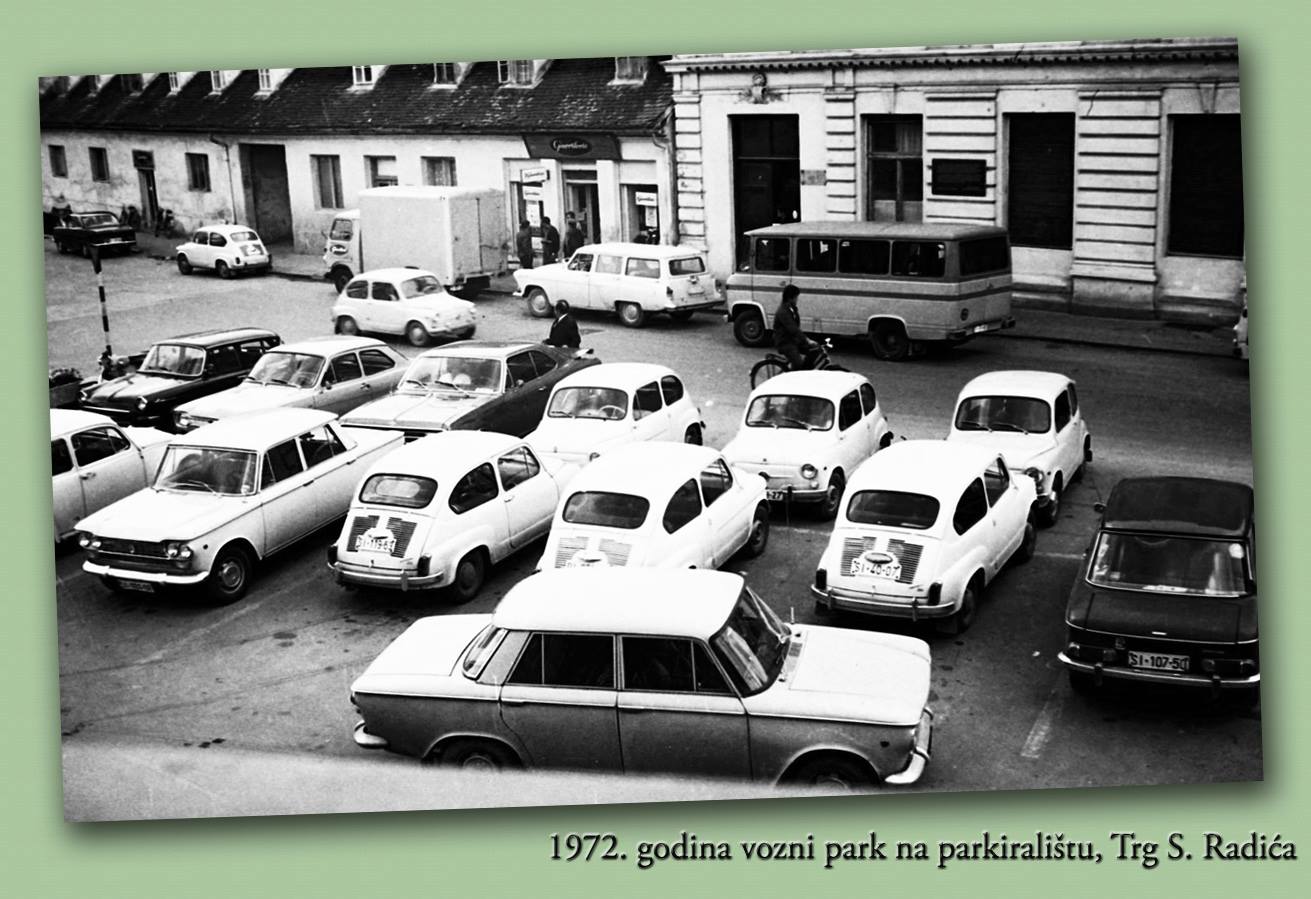
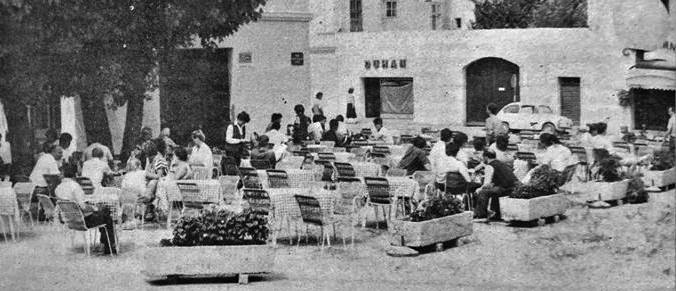
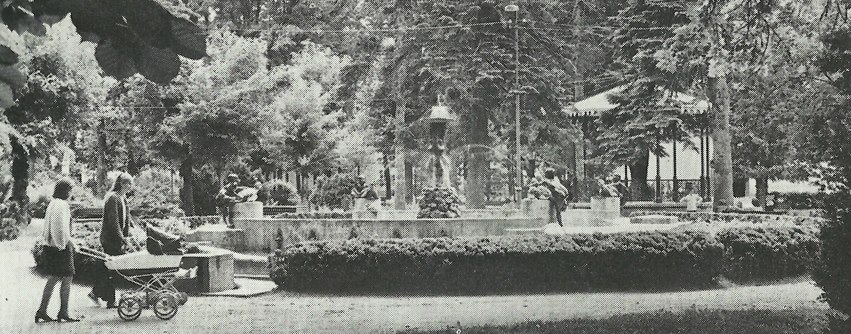
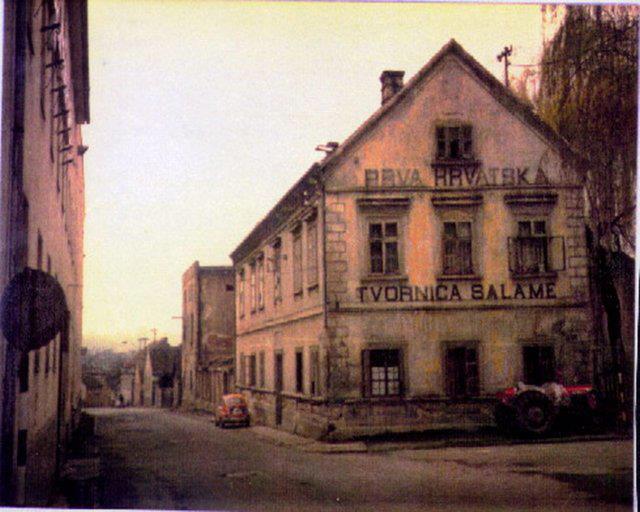
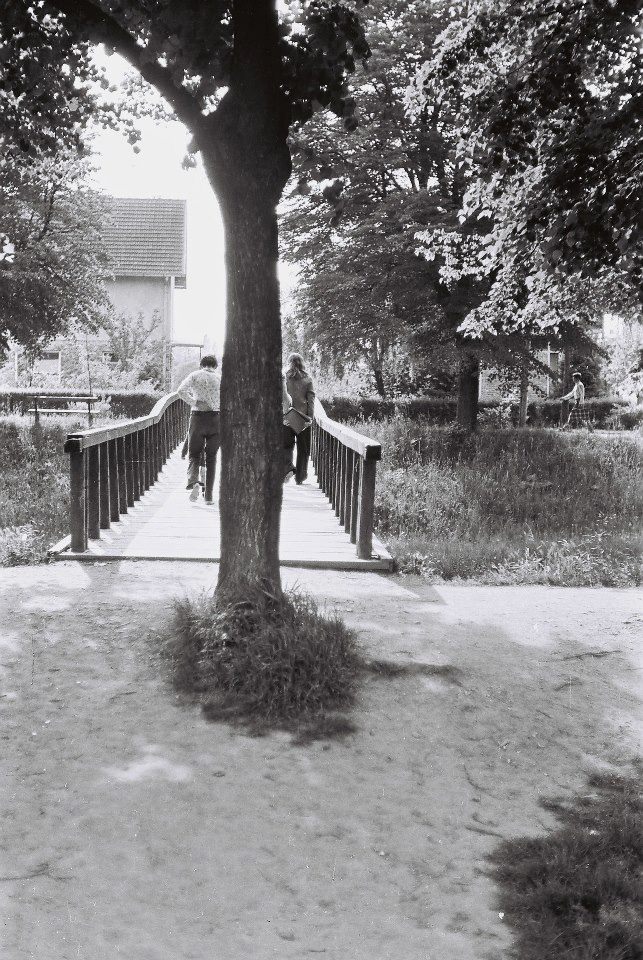
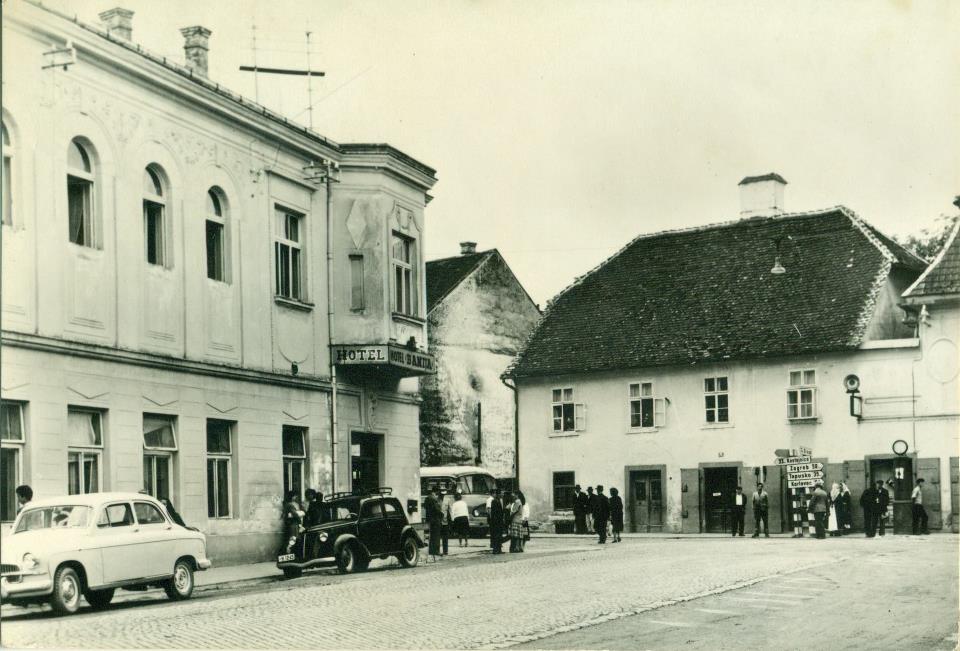
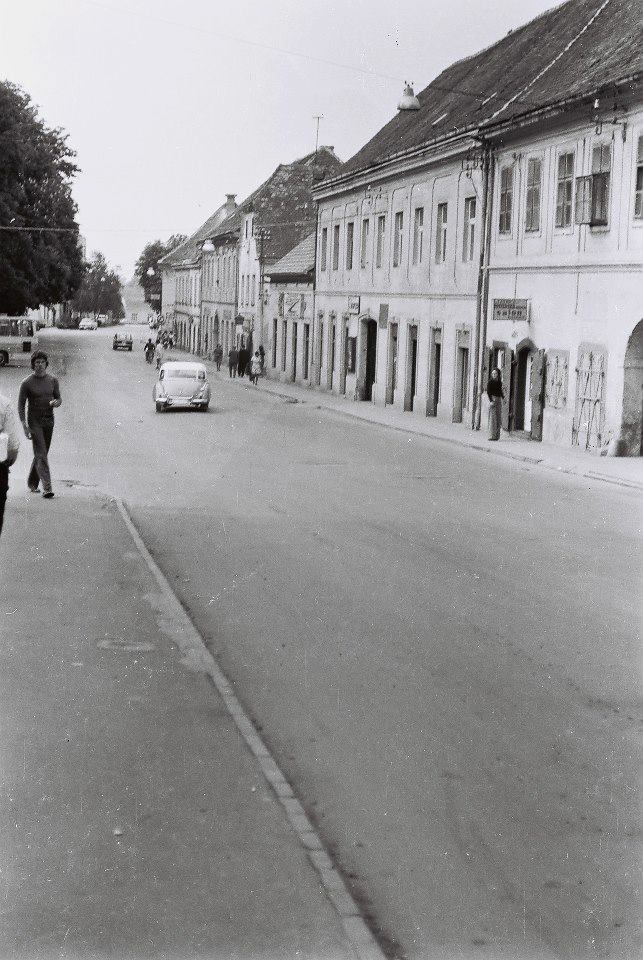
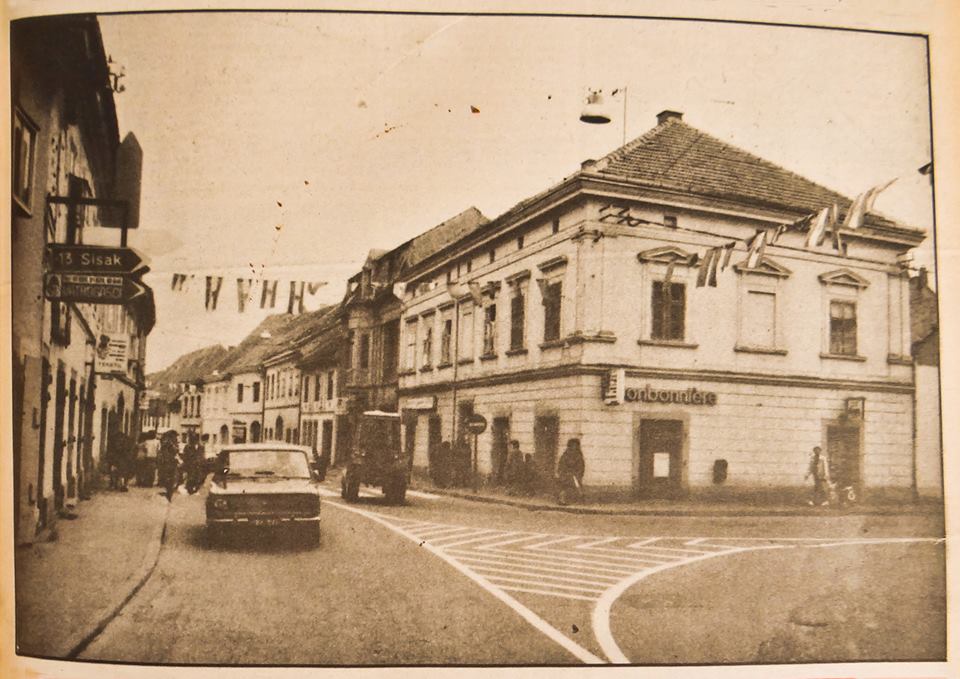
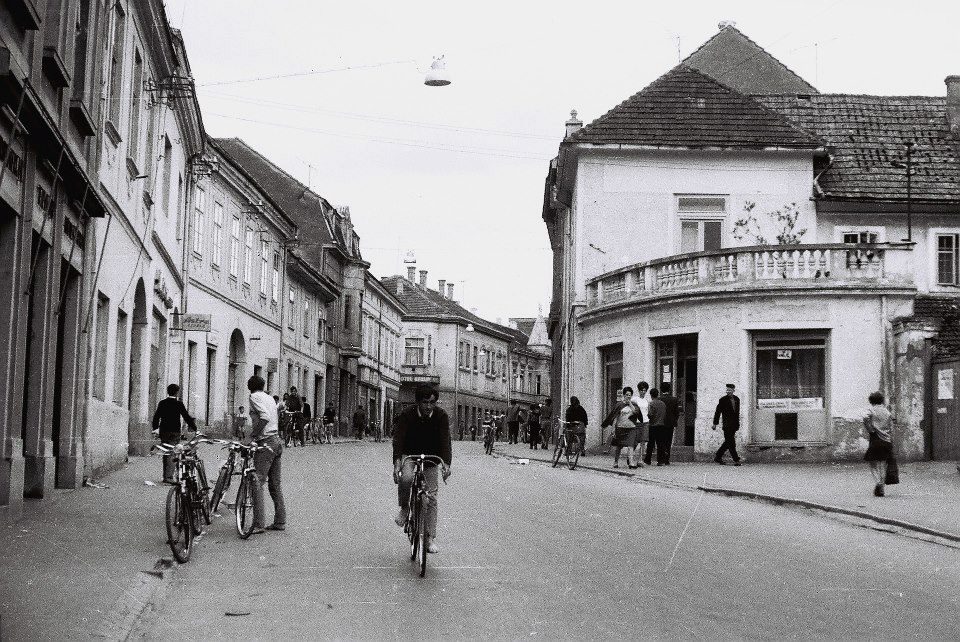
Petrinja has always been a town of the Christian religion. Many Orthodox Christians fled to the area to escape the invading Ottomans. The name of the town's most famous industrial family, Gavrilović, for instance, is more associated with Orthodox Serbia than Catholic Croatia. But, by 1948, over 82% of the town identified as Croatian. The town and surrounding areas were repopulated following the Second World War, for political and economic reasons. By 1981, 31.36% of the population of historic Petrinja and its surrounding settlements identified as Serbs, 39.31% as Croats and 24.69% as Yugoslavs. If you're not from the region, that might be difficult to get your head around.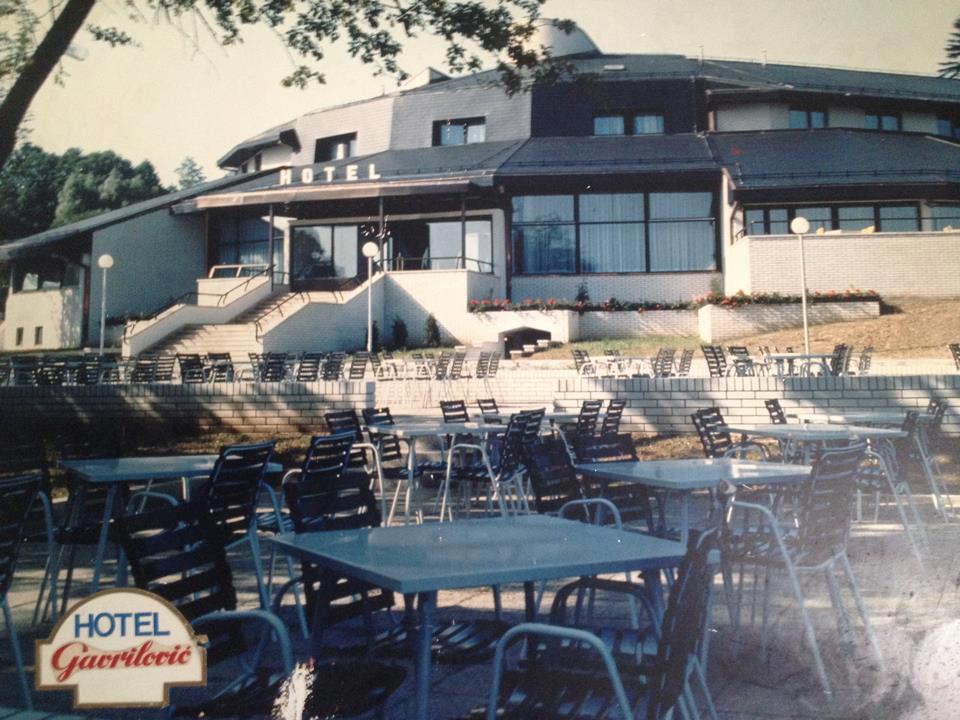
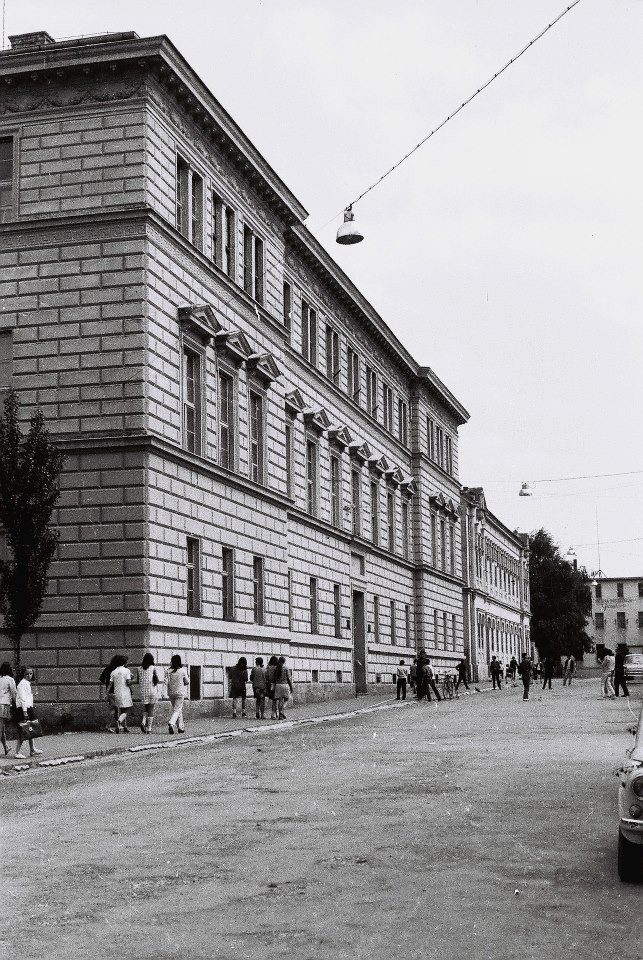
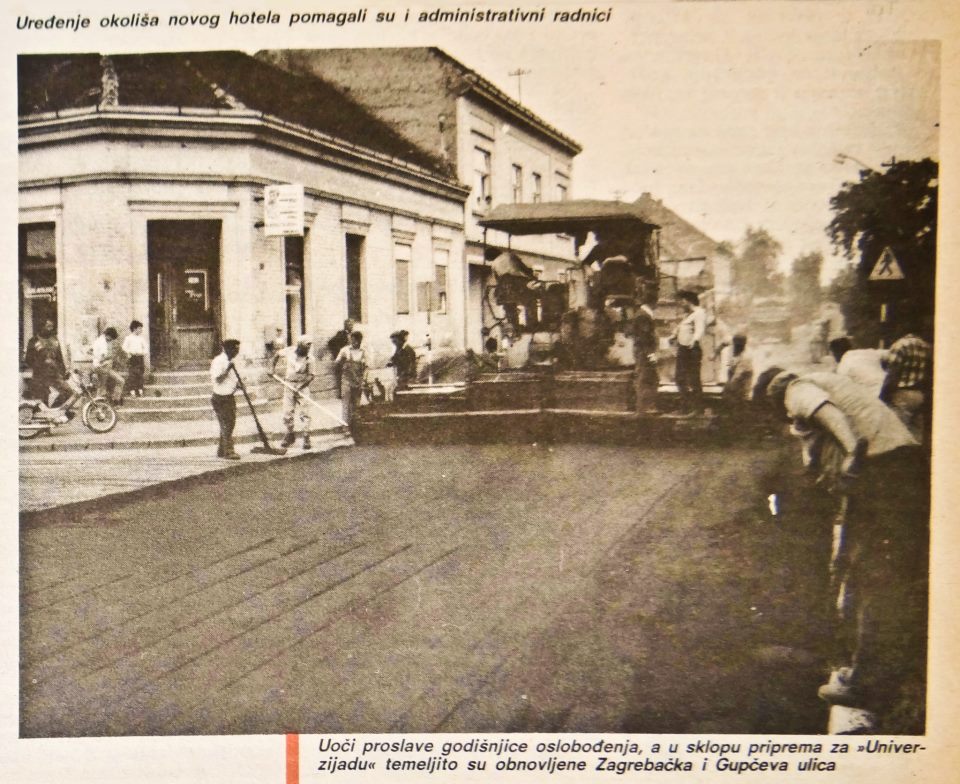
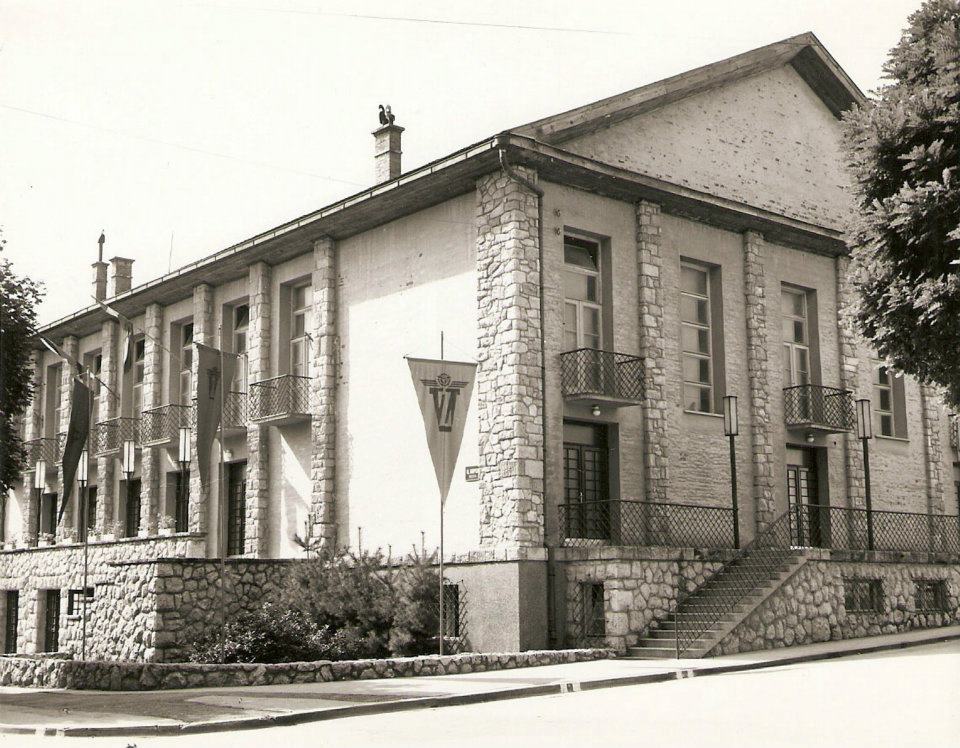
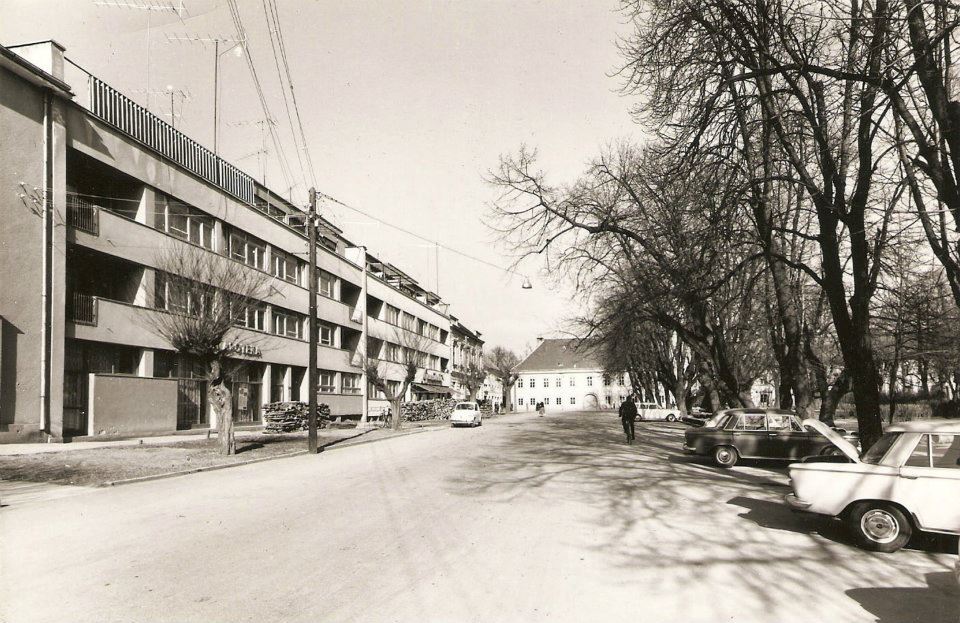

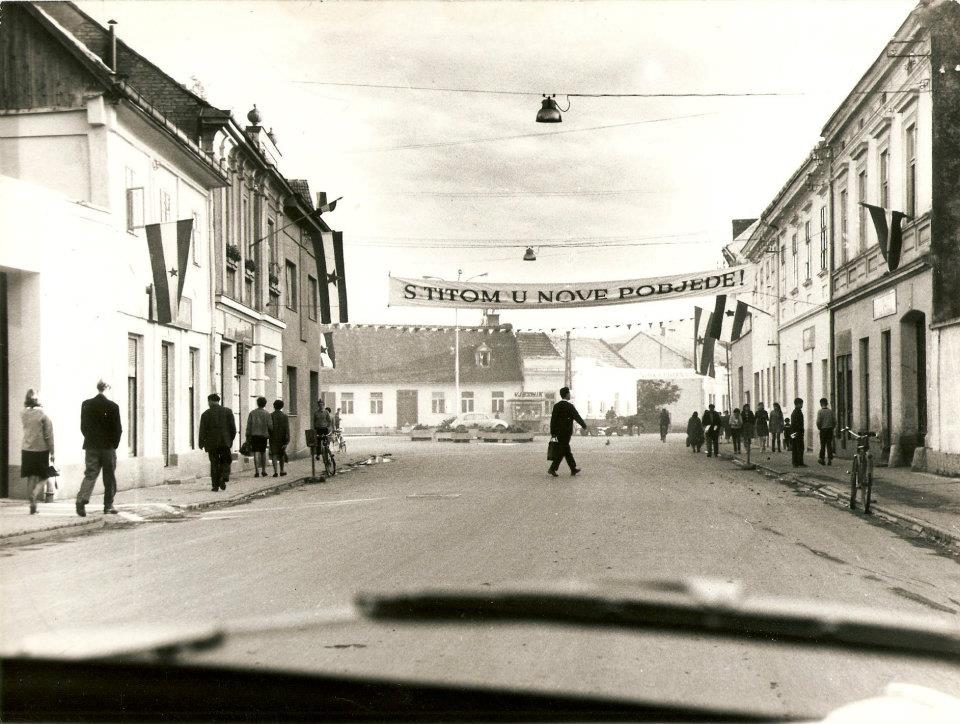
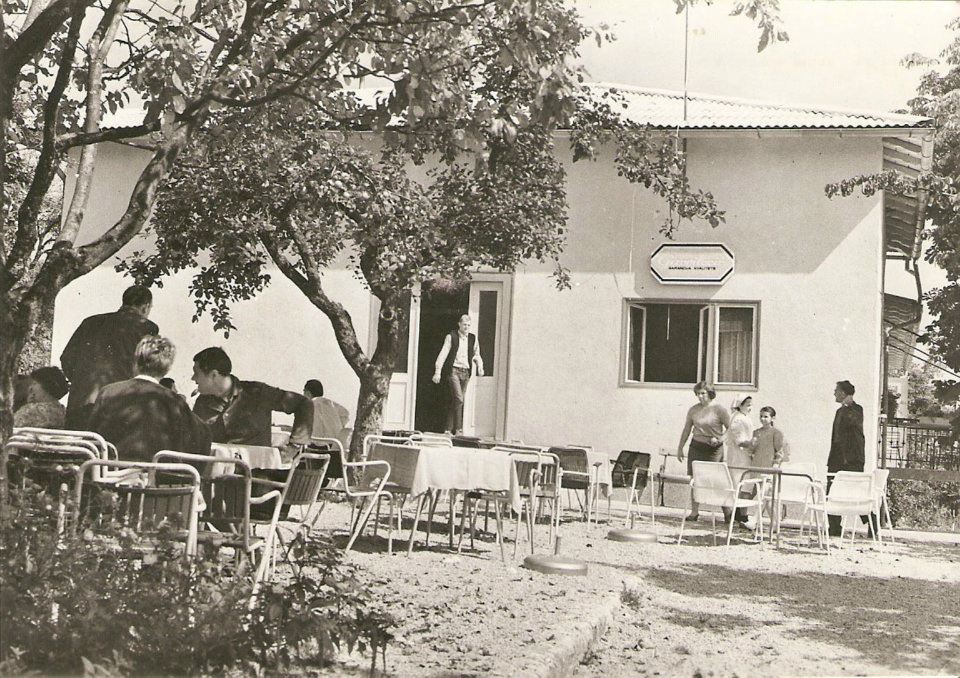

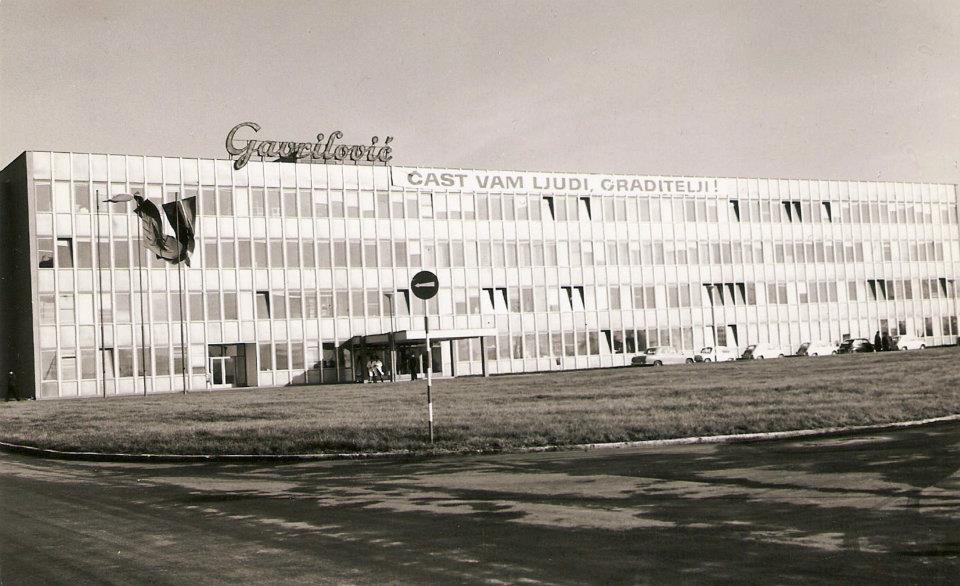
”Even in the times of the Iron Curtain, the Gavrilović company supplied meat to the American army who were stationed in some areas of southern and eastern Europe,” a resident of historic Petrinja tells TCN. “Everyone across Yugoslavia knew about this company. They had lots of great products – they still do! Many people used to work there,” Although the Gavrilović family fled the area after the Second World War, when the company was seized and nationalised by communist authorities, they came back in the 1990s to save it from bankruptcy. They returned production to the historic Petrinja area and today the company is run by the ninth generation of the Gavrilović family to be at the helm
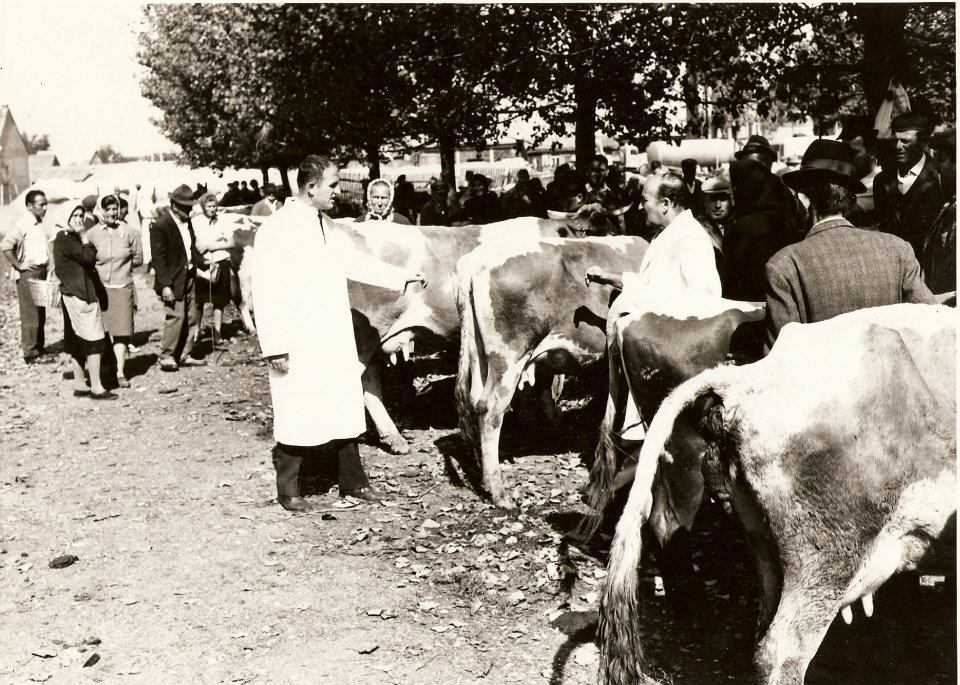
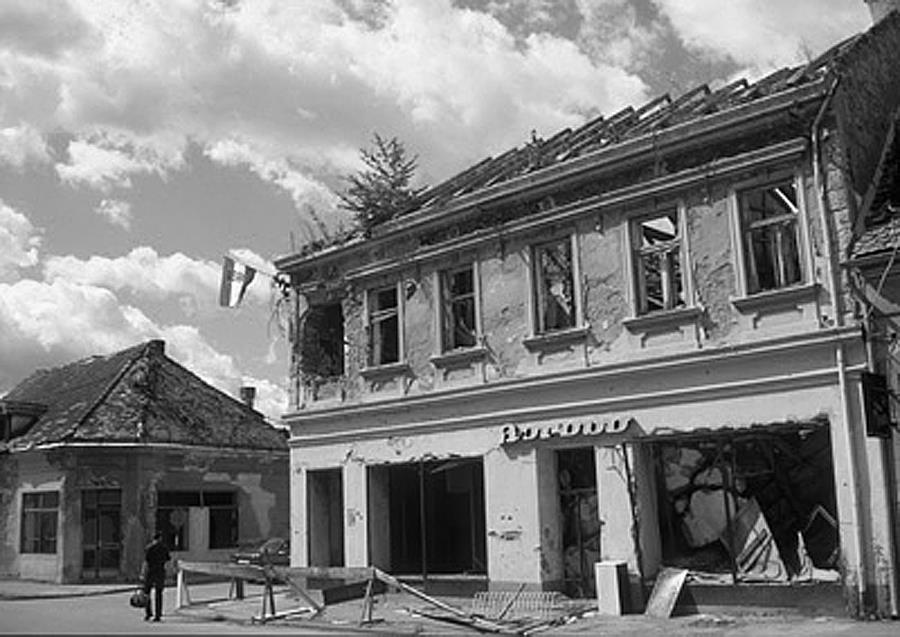

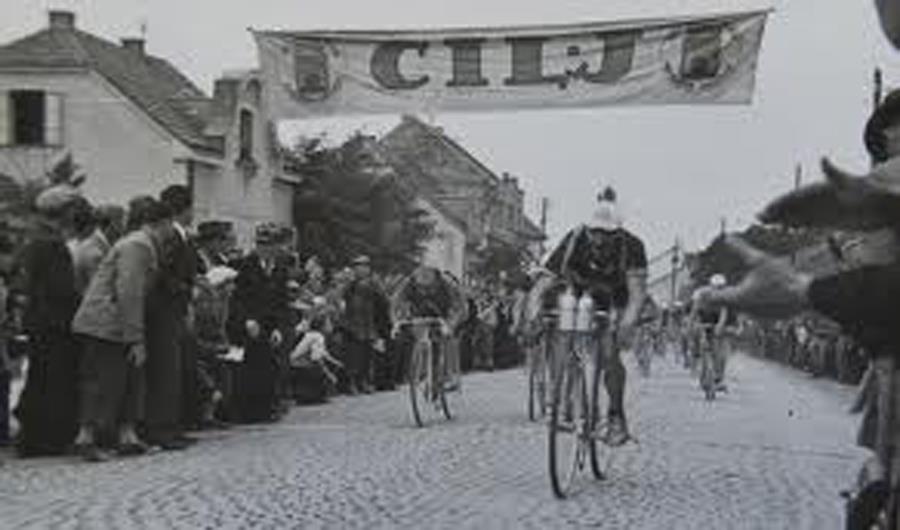
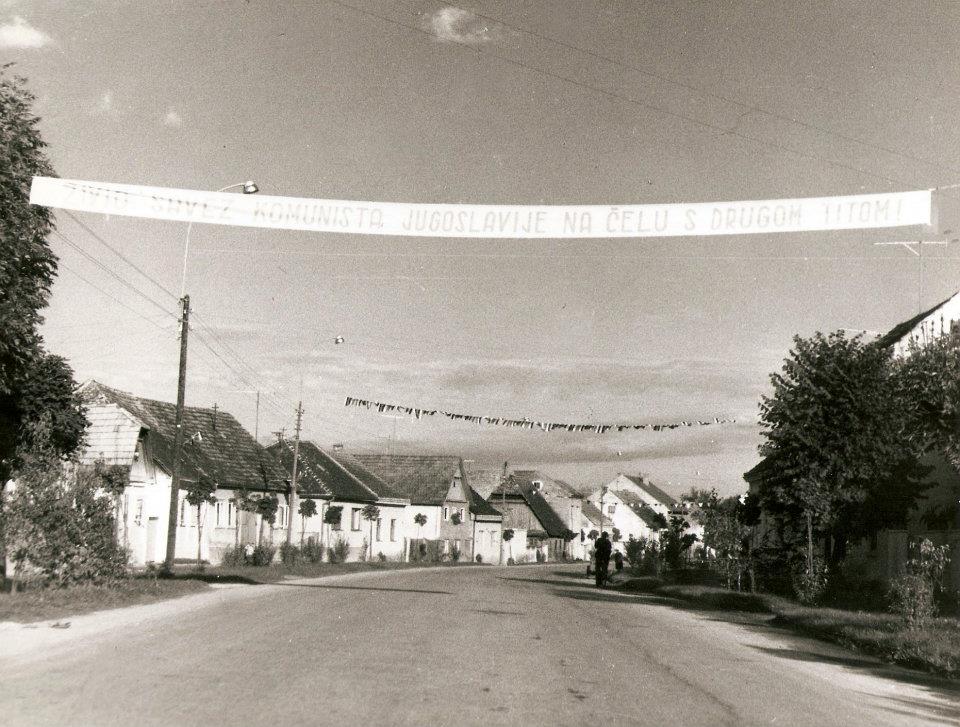
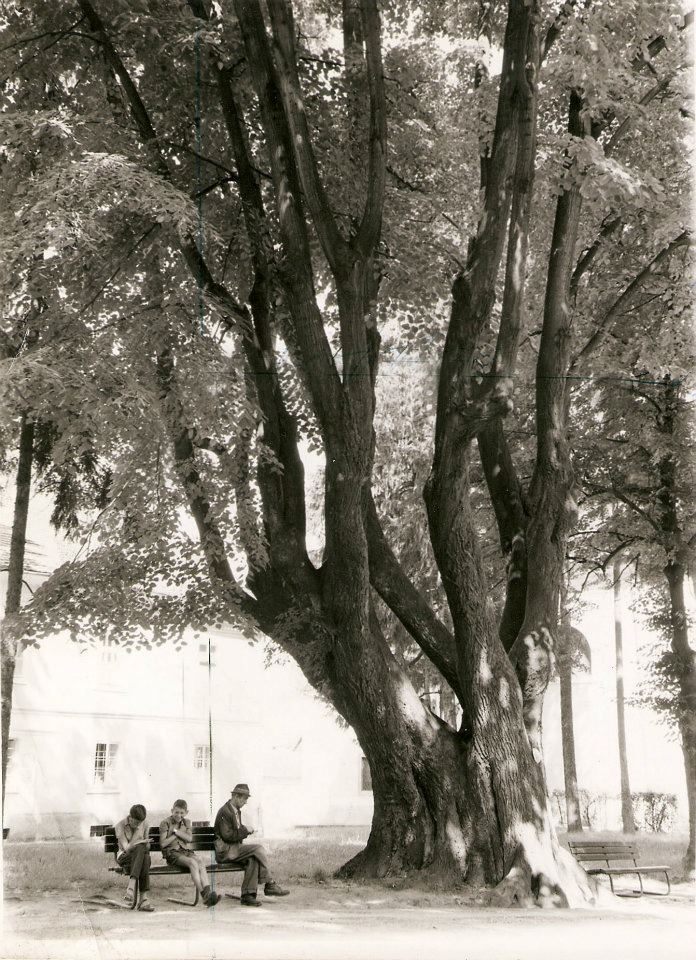

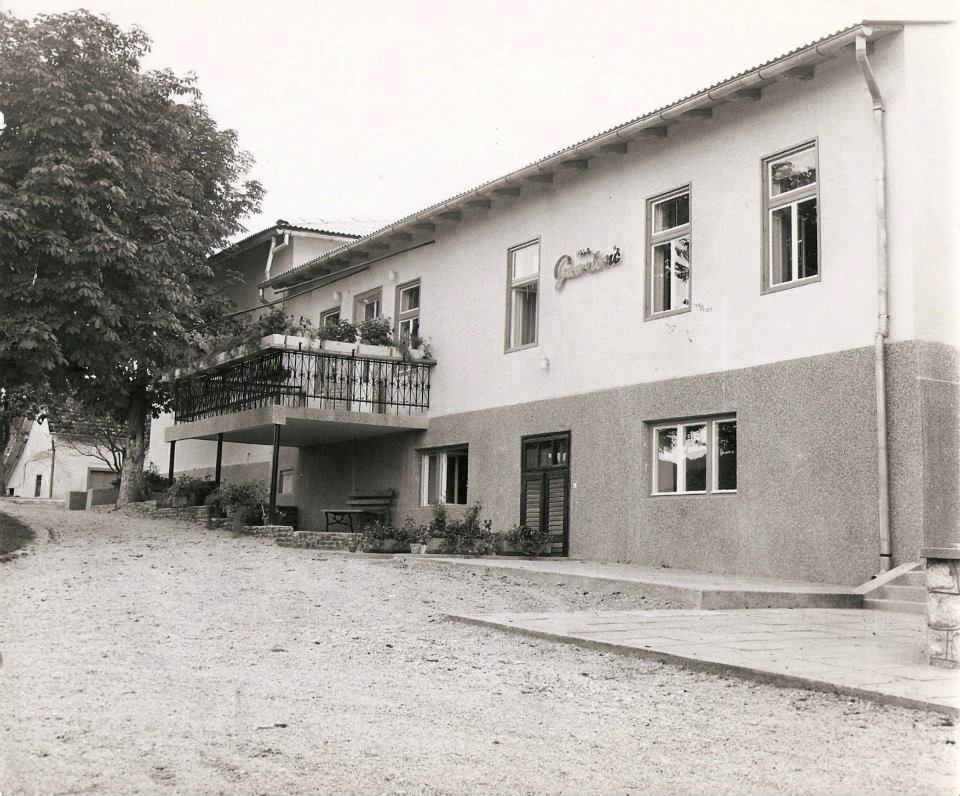
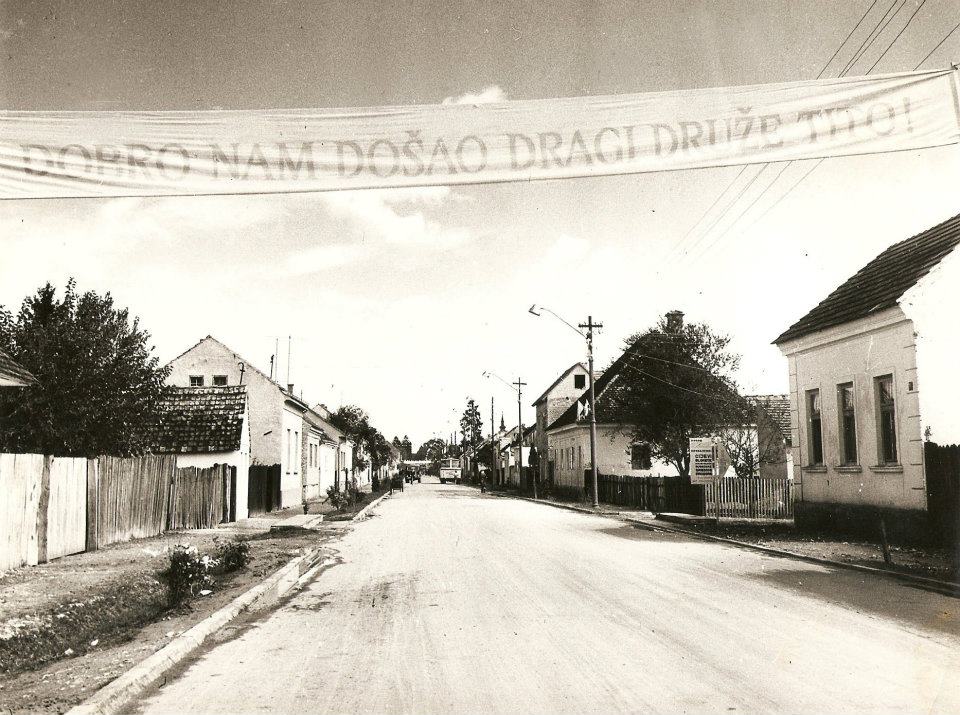
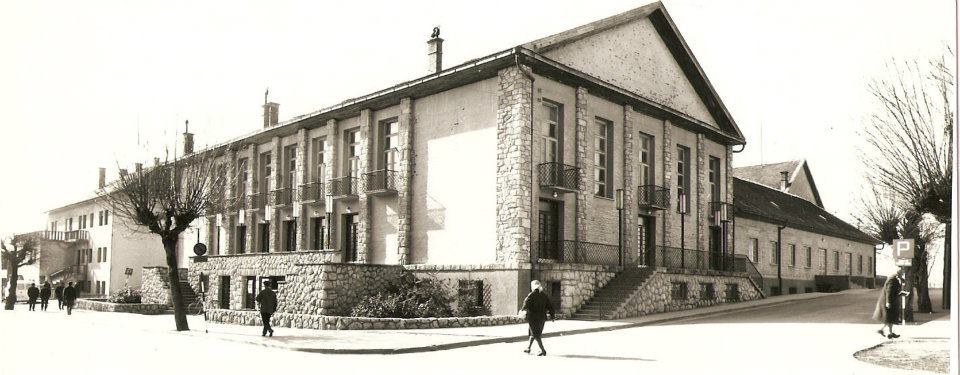

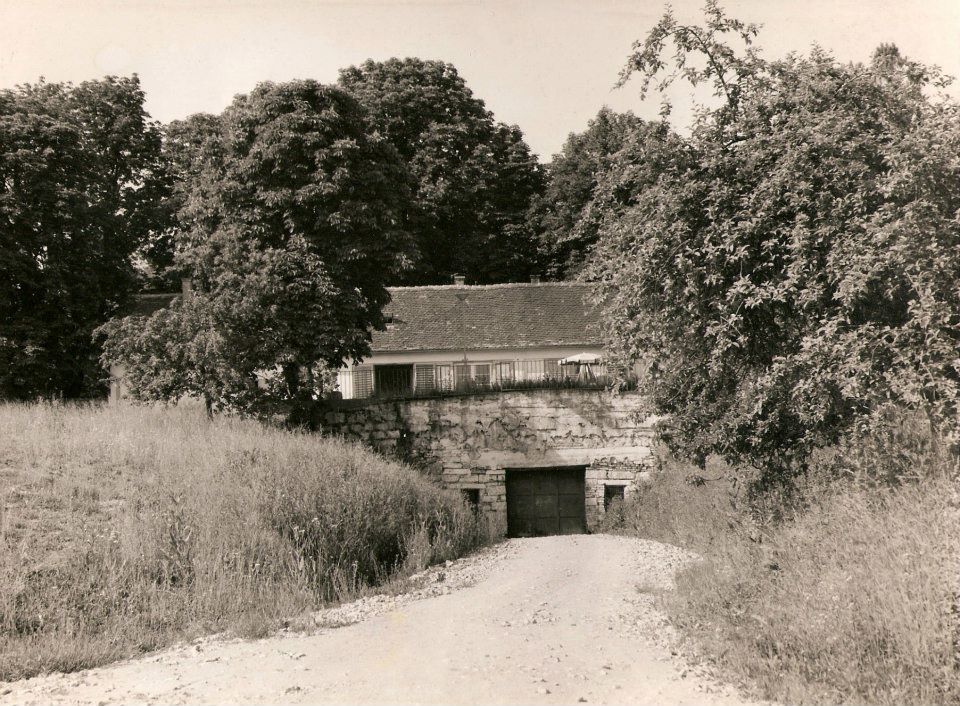
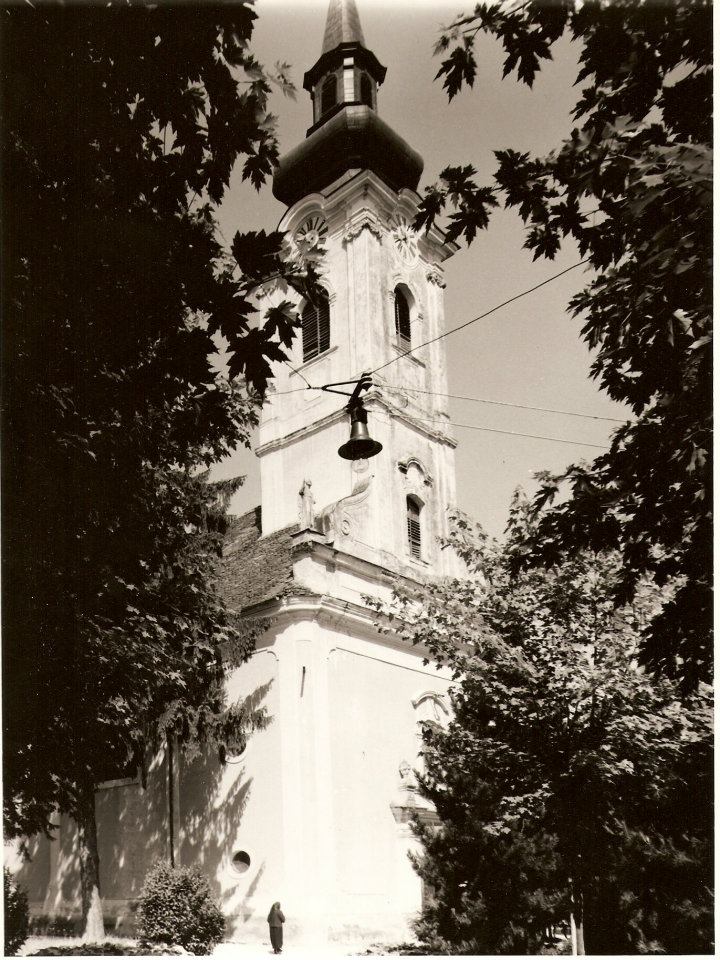
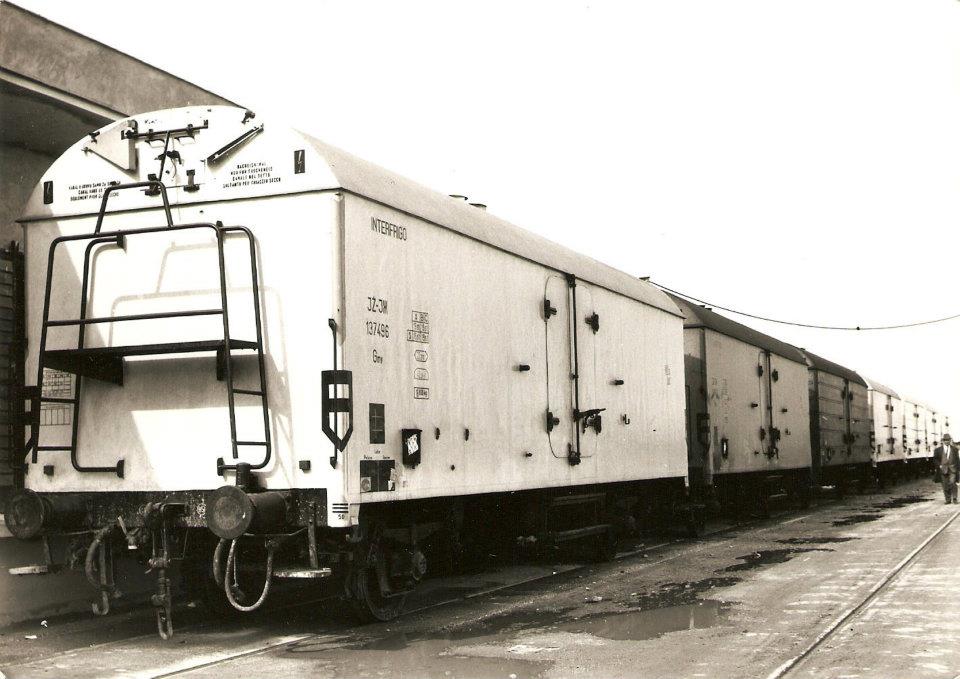
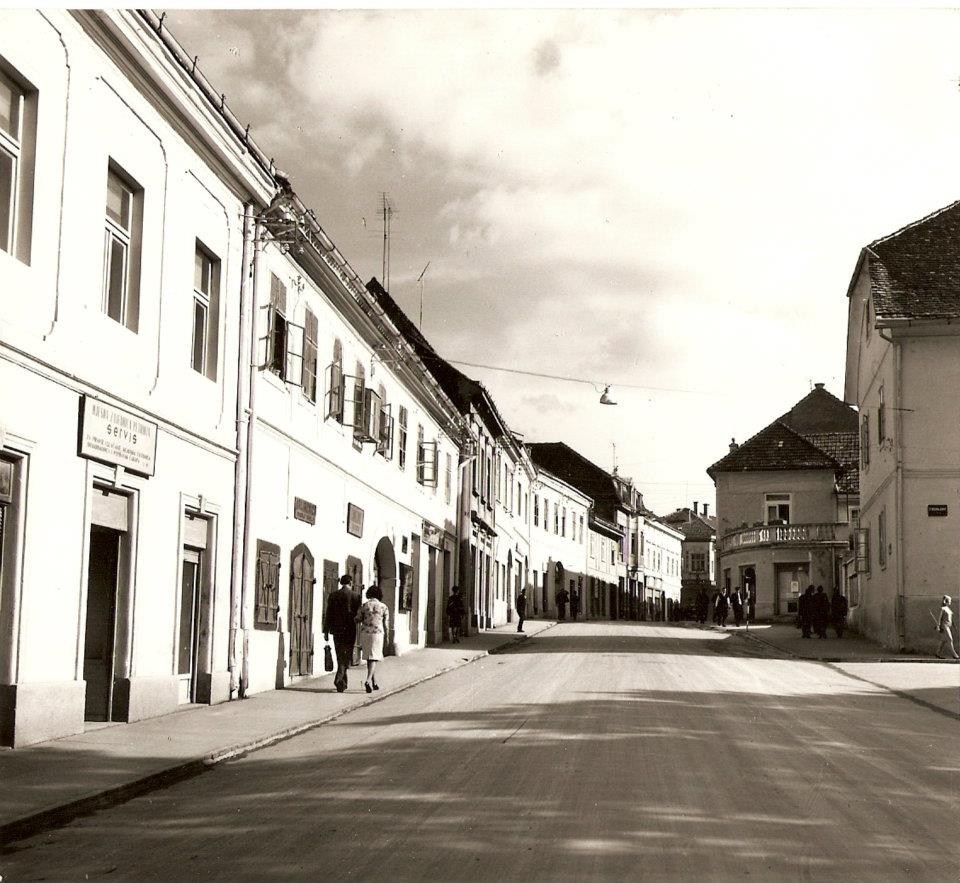
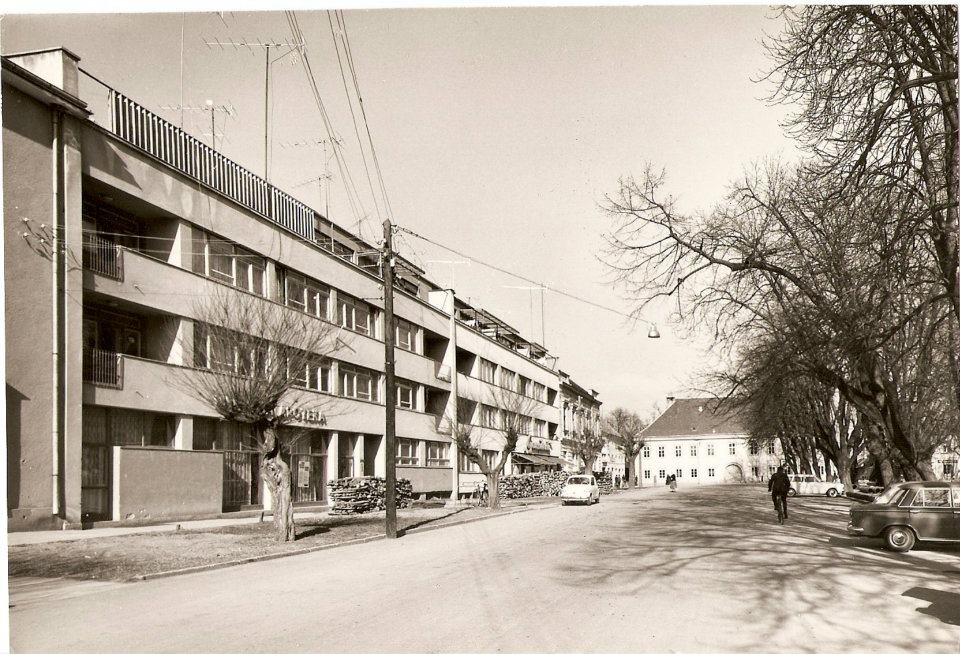
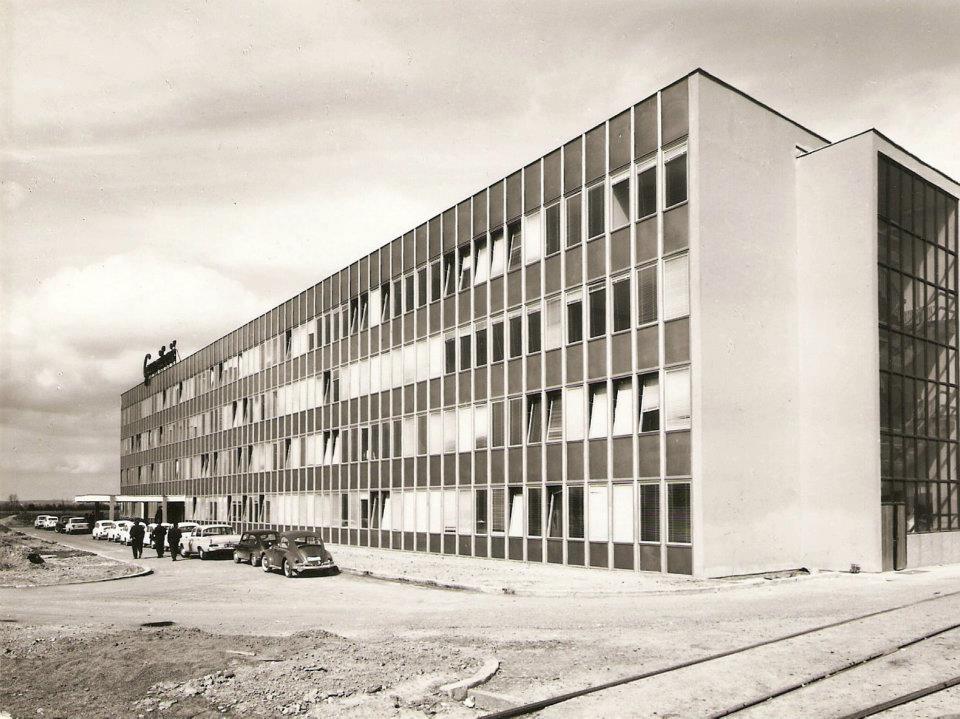
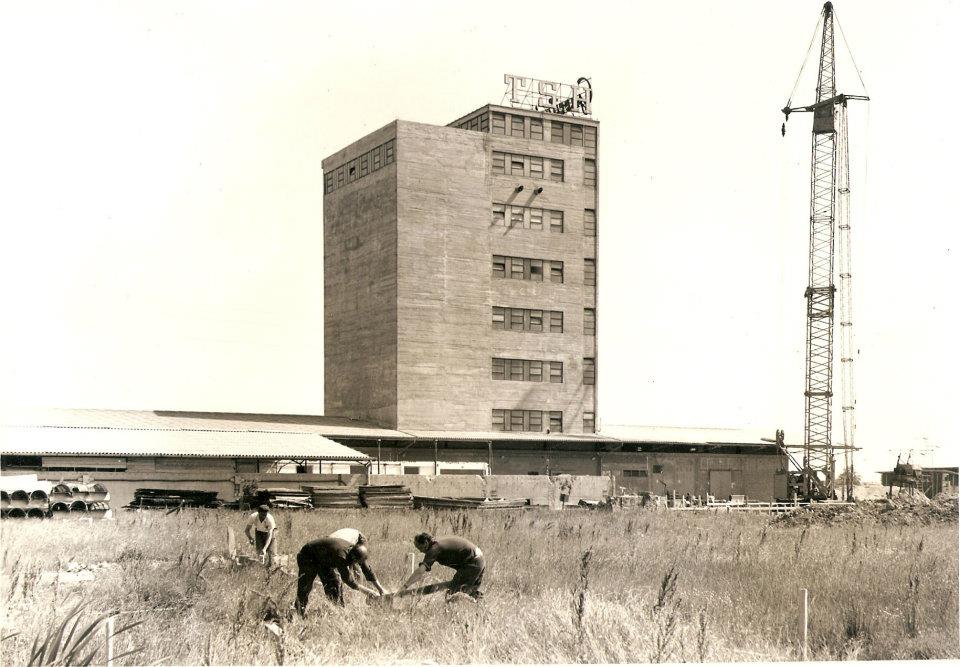

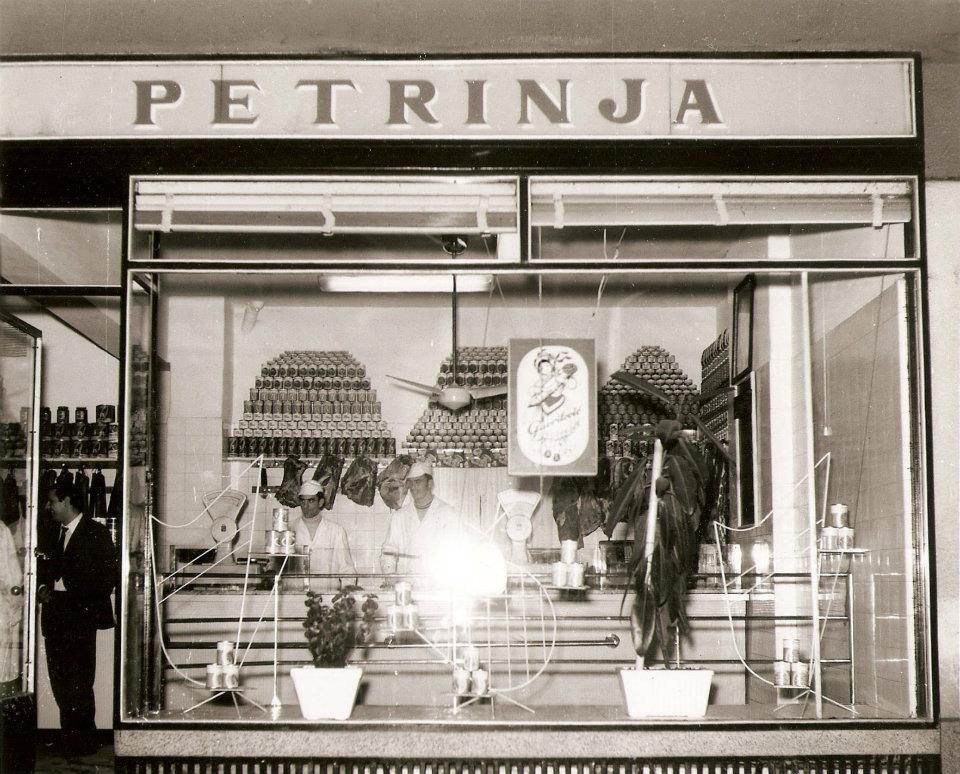
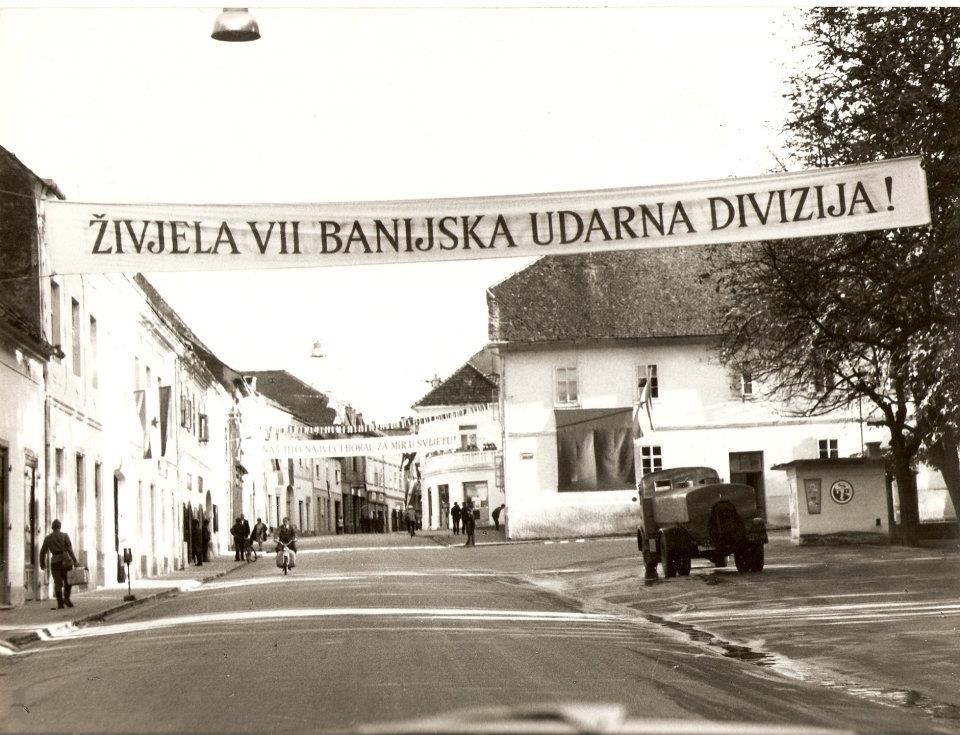
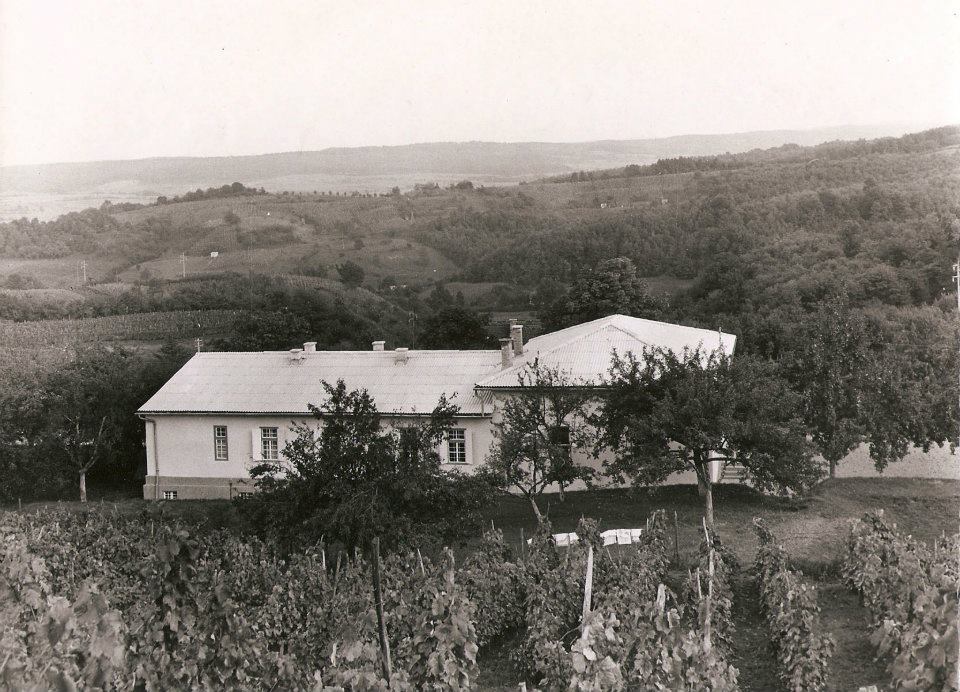
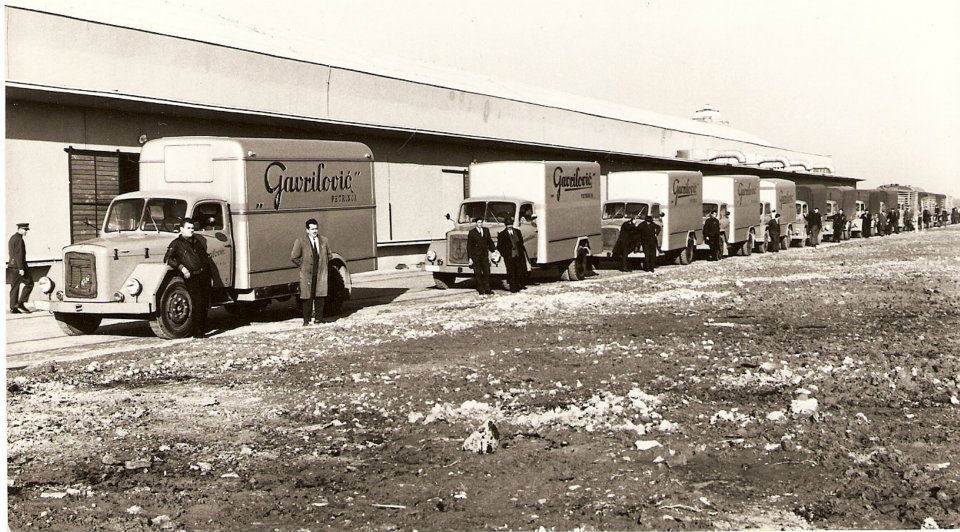
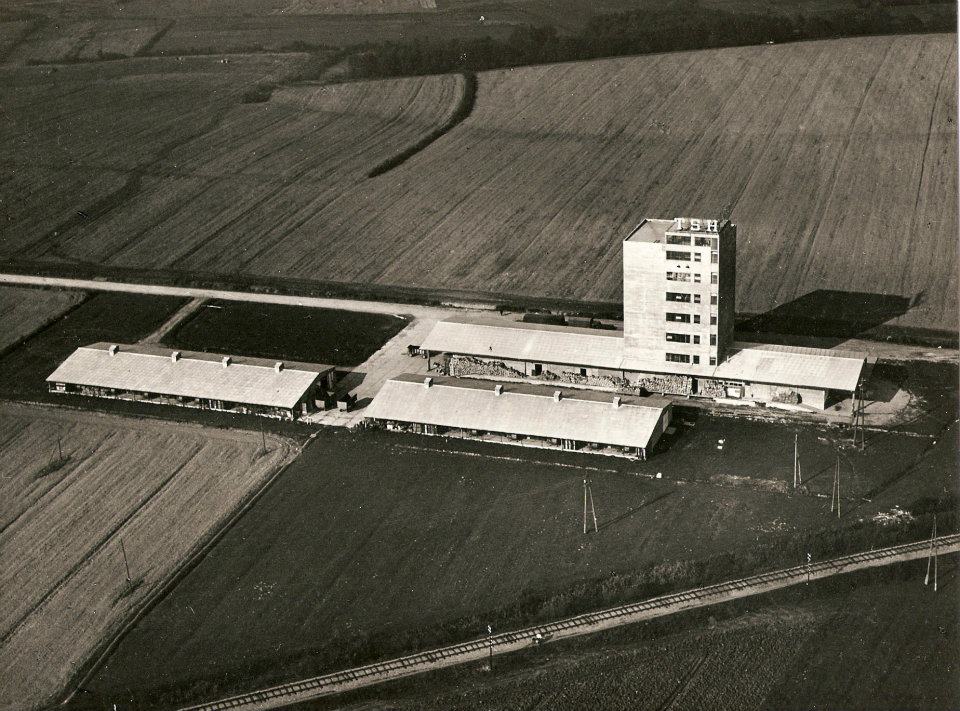
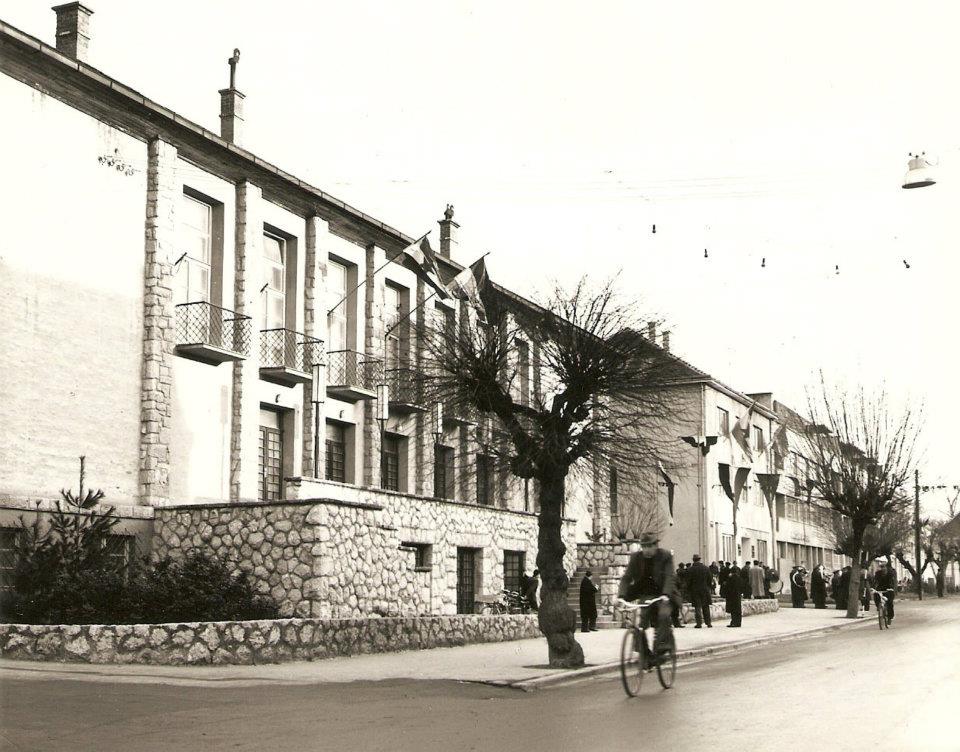
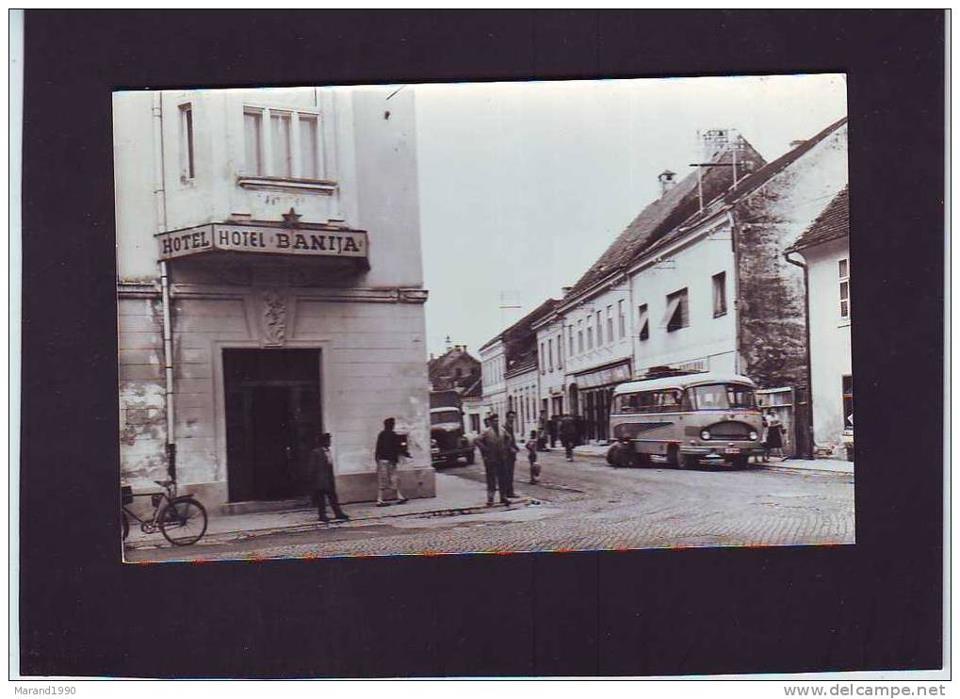
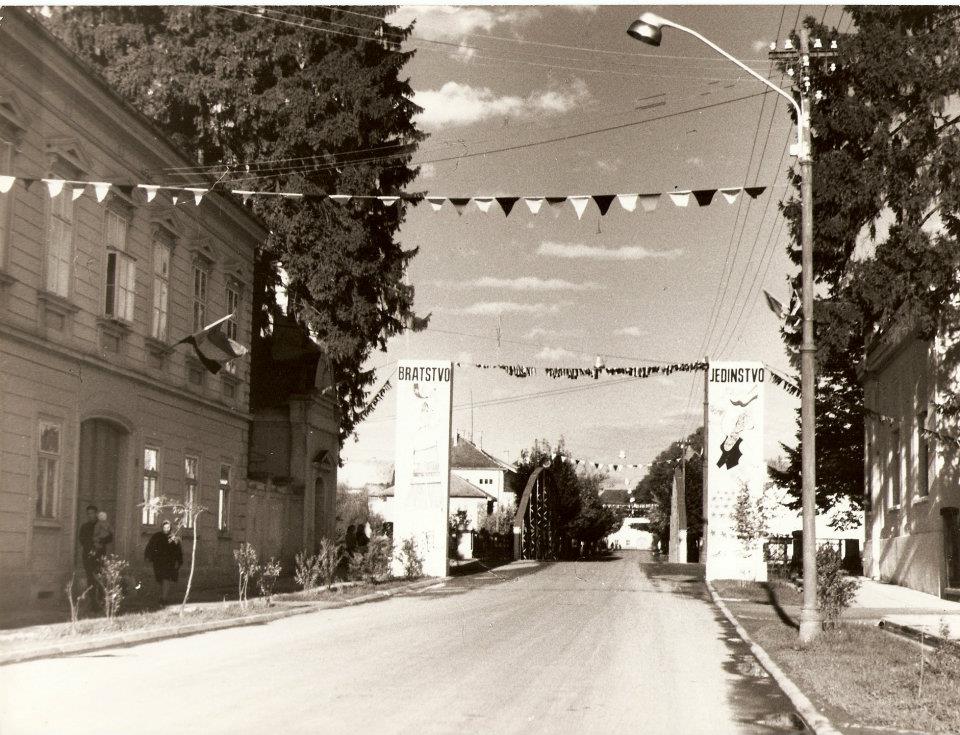
Croatia is renowned for many famous sculptors, not least Ivan Mestrovic, whose works appear all over the world. However, the first sculpture ever produced in Croatia as a public work of art was a statue of 'people's politician' Stjepan Radić, who came from nearby Desno Trebarjevo, Martinska Ves. It was made by Croatian sculptor Mila Wod (1929 in historic Petrinja). It was unveiled in Petrinja in 1936, but removed and vandalised during the 1991-1995 occupation, but found nearby, restored and returned to the centre of Petrinja in1999 in a square now named after Stjepan Radić.
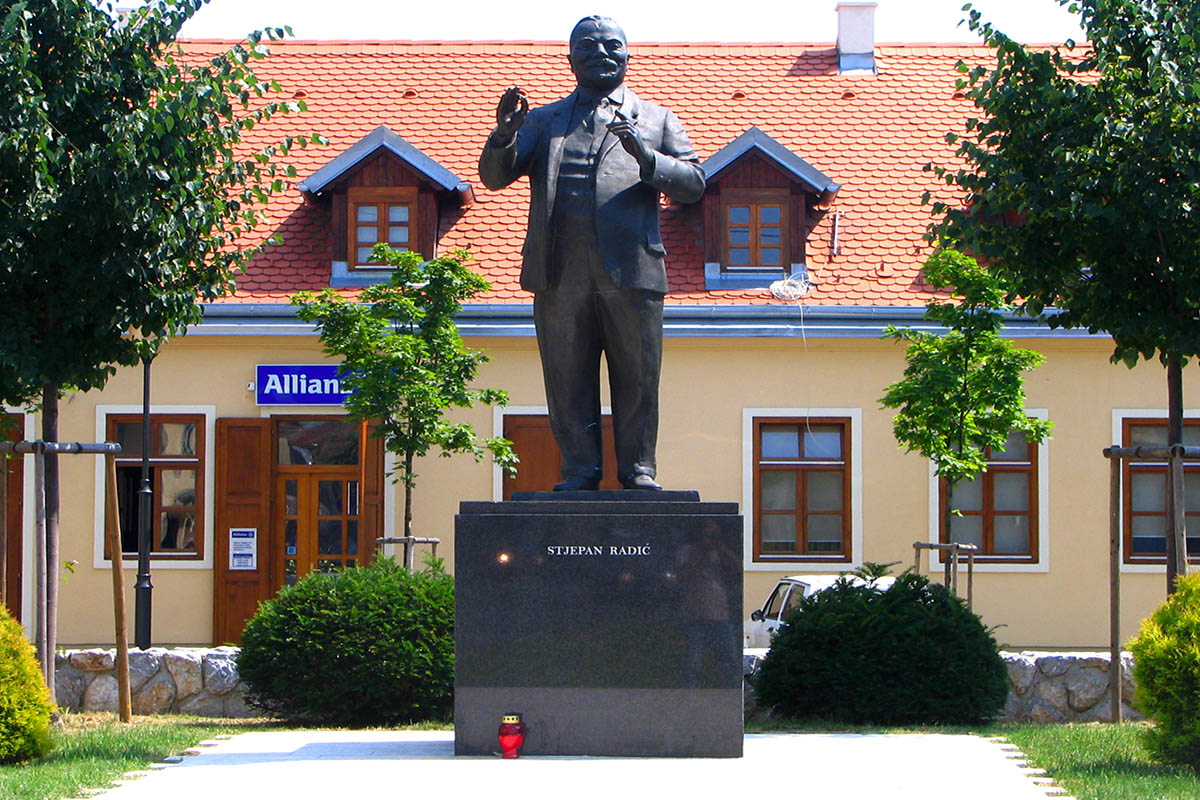 © Tourist Board of Petrinja
© Tourist Board of Petrinja
All photos © Tajanstvena Hrvatska / Public domain unless otherwise identified
Big Brother in Split: City Center to be Under Video Surveillance this Summer
May 16, 2020 - By the beginning of summer, surveillance cameras will be installed in 14 locations, or public areas, in the city center of Split.
If you've been wondering about the installations in attractive locations around the heart of the city over the last few days, it is most likely the new surveillance devices installed by the employees of the company "Electronic Security", which is the contractor of the project. This news was confirmed to Slobodna Dalmacija by Krešimir Budiša, the mayor's advisor for development projects.
The video cameras will thus cover the most popular areas in the city center, like Peristyle, Pjaca, Matejuška, the area in front of the Croatian National Theater, Sv. Frane, the Riva on both ends, Marmontova, King Tomislav Street near the Josip Hatze Music School, the top of Bosanska Street, Zlatna Vrata, Đardin and Dr. Franjo Tuđman Square.
"With this, we will finally get video surveillance of the city center in the 21st century. The cameras are currently in function at the Croatian National Theater and Matejuška. The cameras will help us fight crime and solve communal problems. For now, the recordings are being monitored from a special room in Banovina, which is being done by a security company, and our plan is to form a joint operational control center for everyone in the building of the former "Čistoća" building," Budiša announced.
HRK 1.7 million has been allocated from this year's budget for the video surveillance of public areas, and the next planned activity is the installation of cameras at bus stops. The Mayor's advisor also announced that the intention of the City of Split is to have full management of traffic and intersections with a modern system, which is already being agreed with the Ministry of Transport.
To read more about lifestyle in Croatia, follow TCN's dedicated page.


